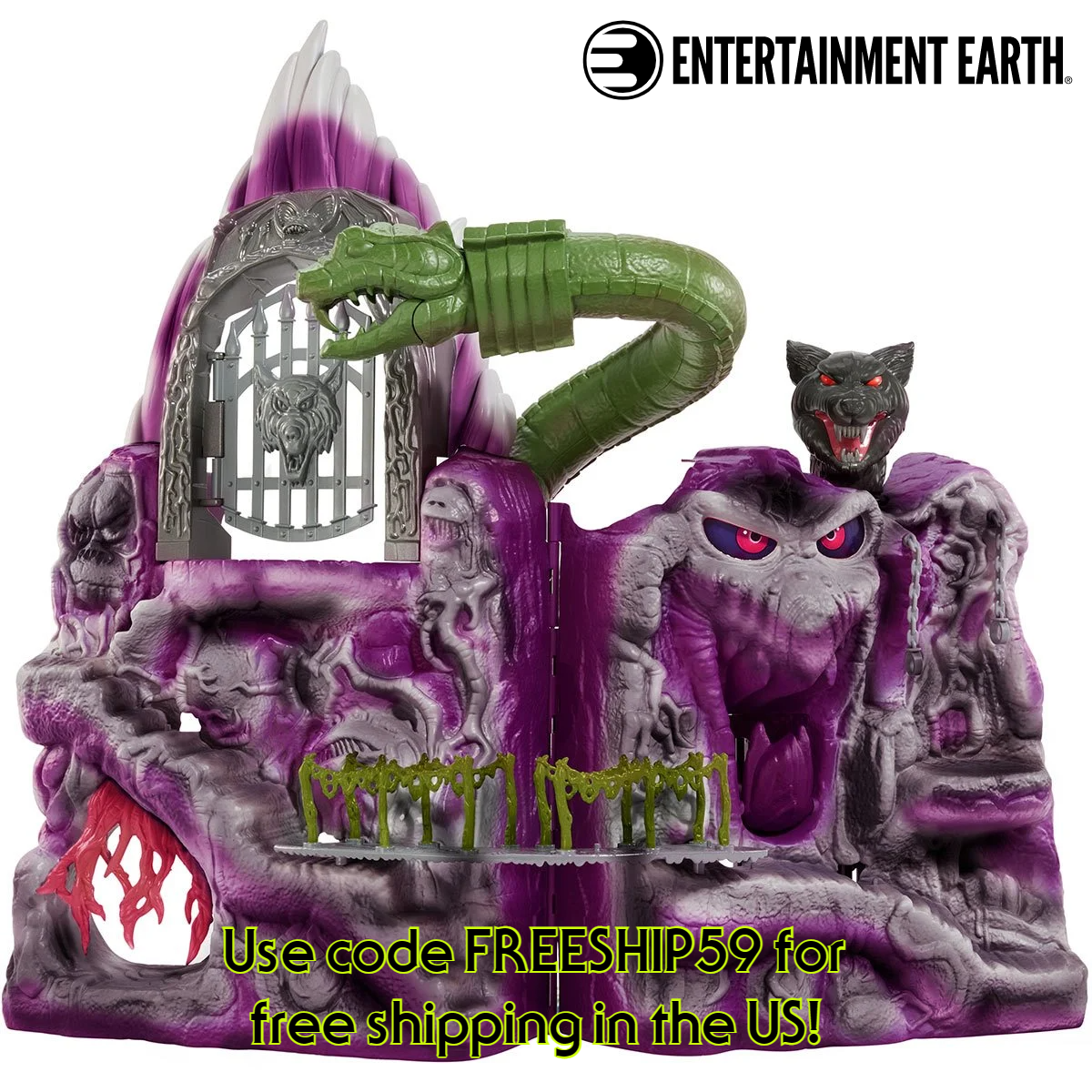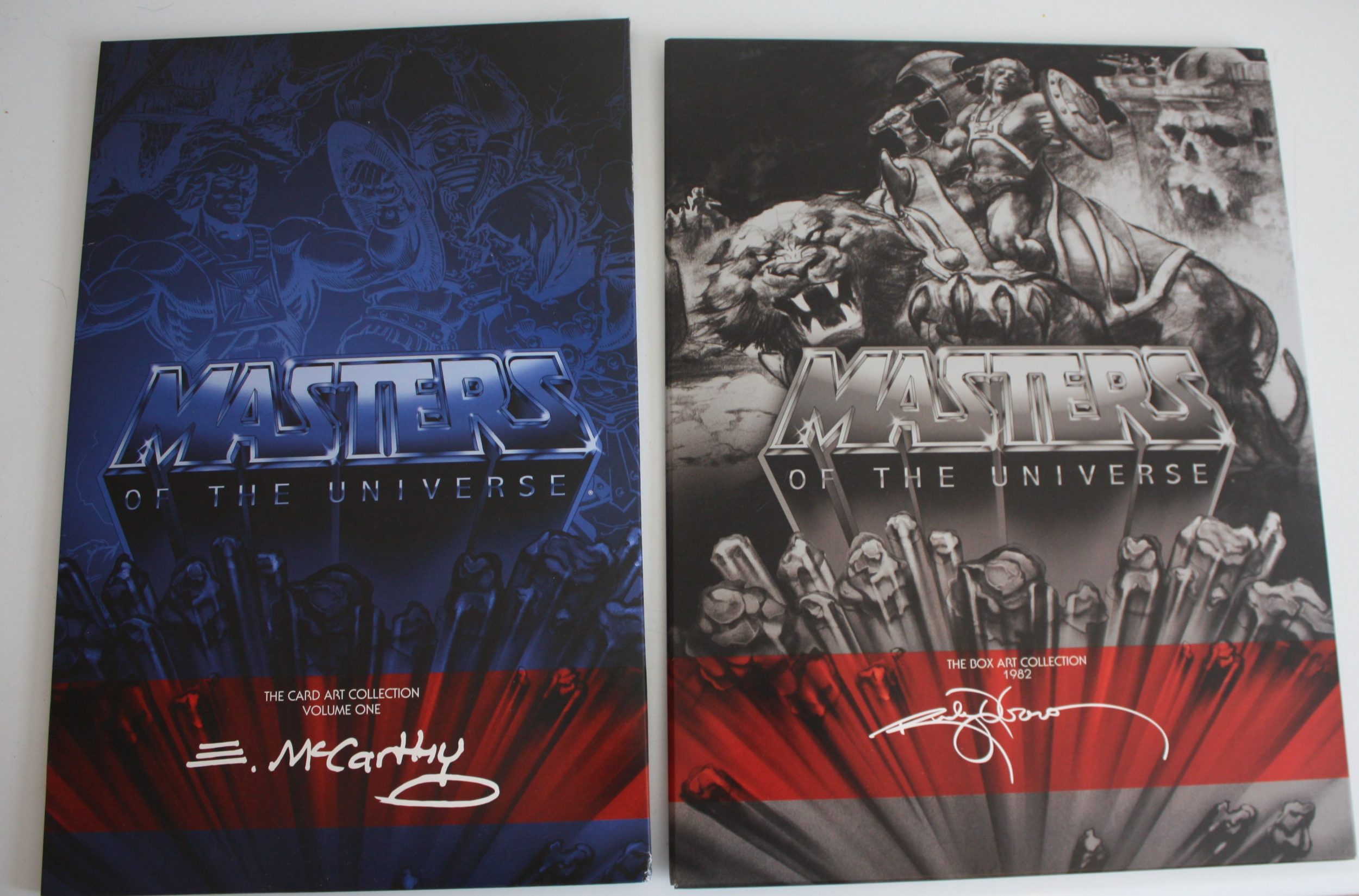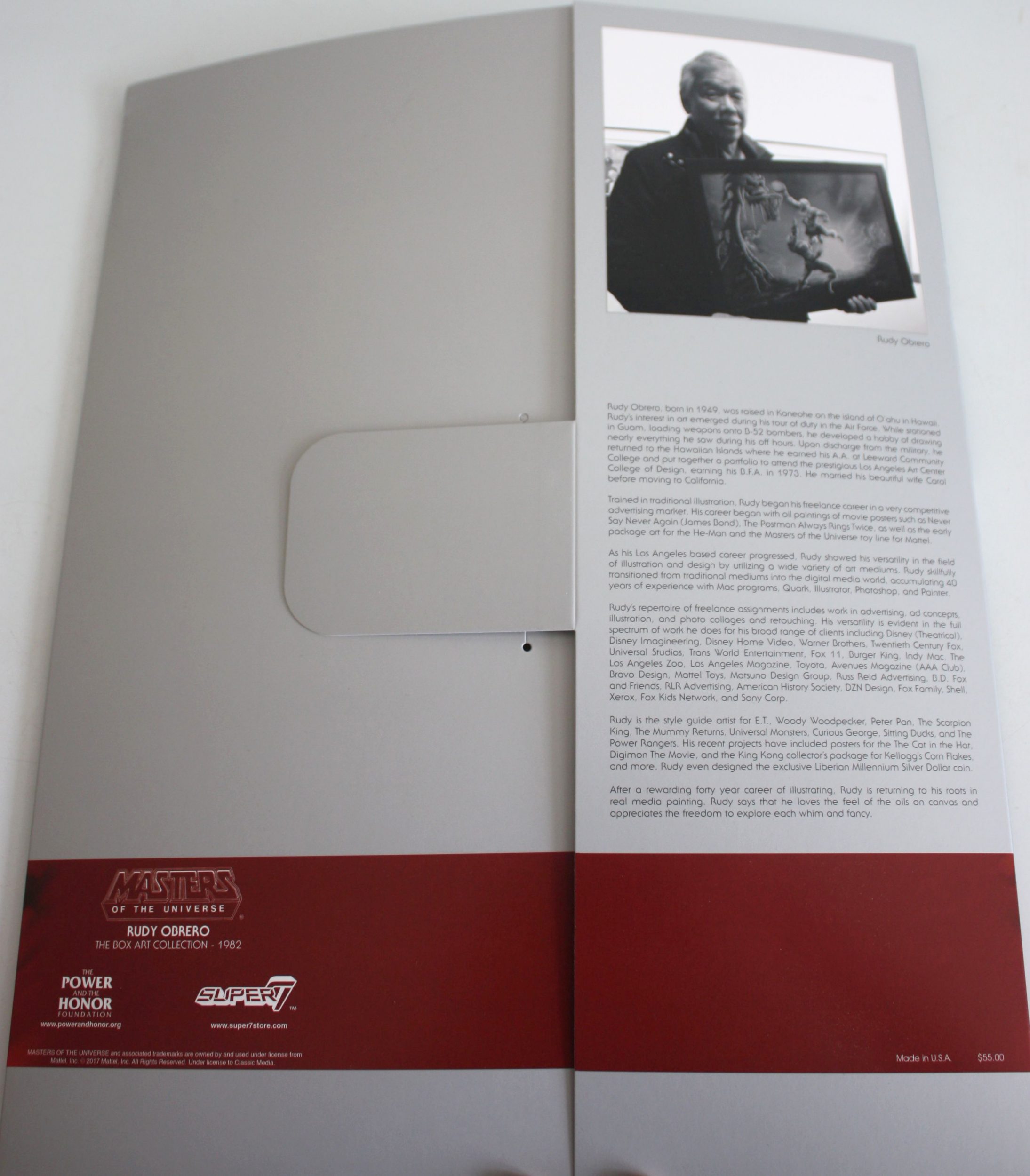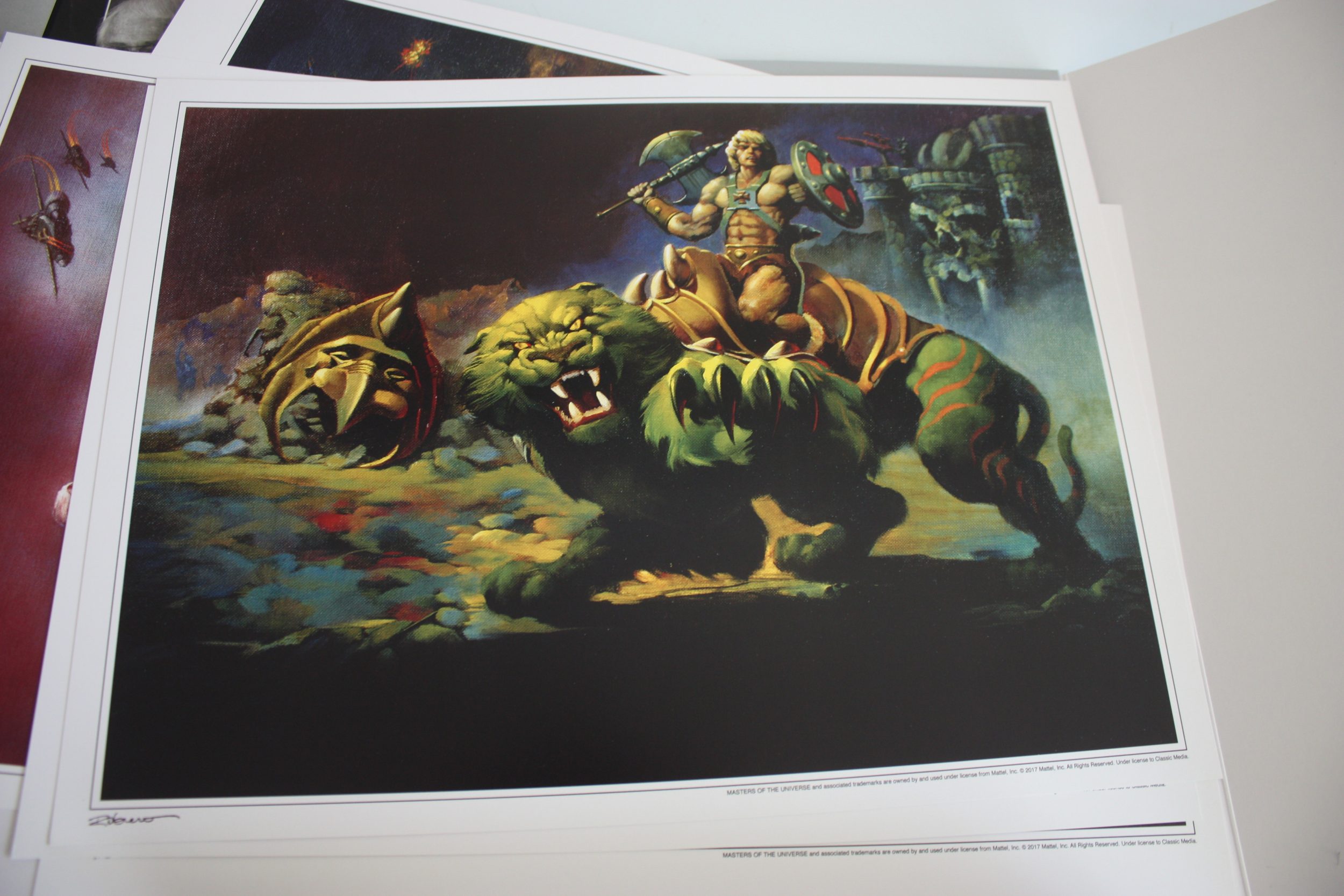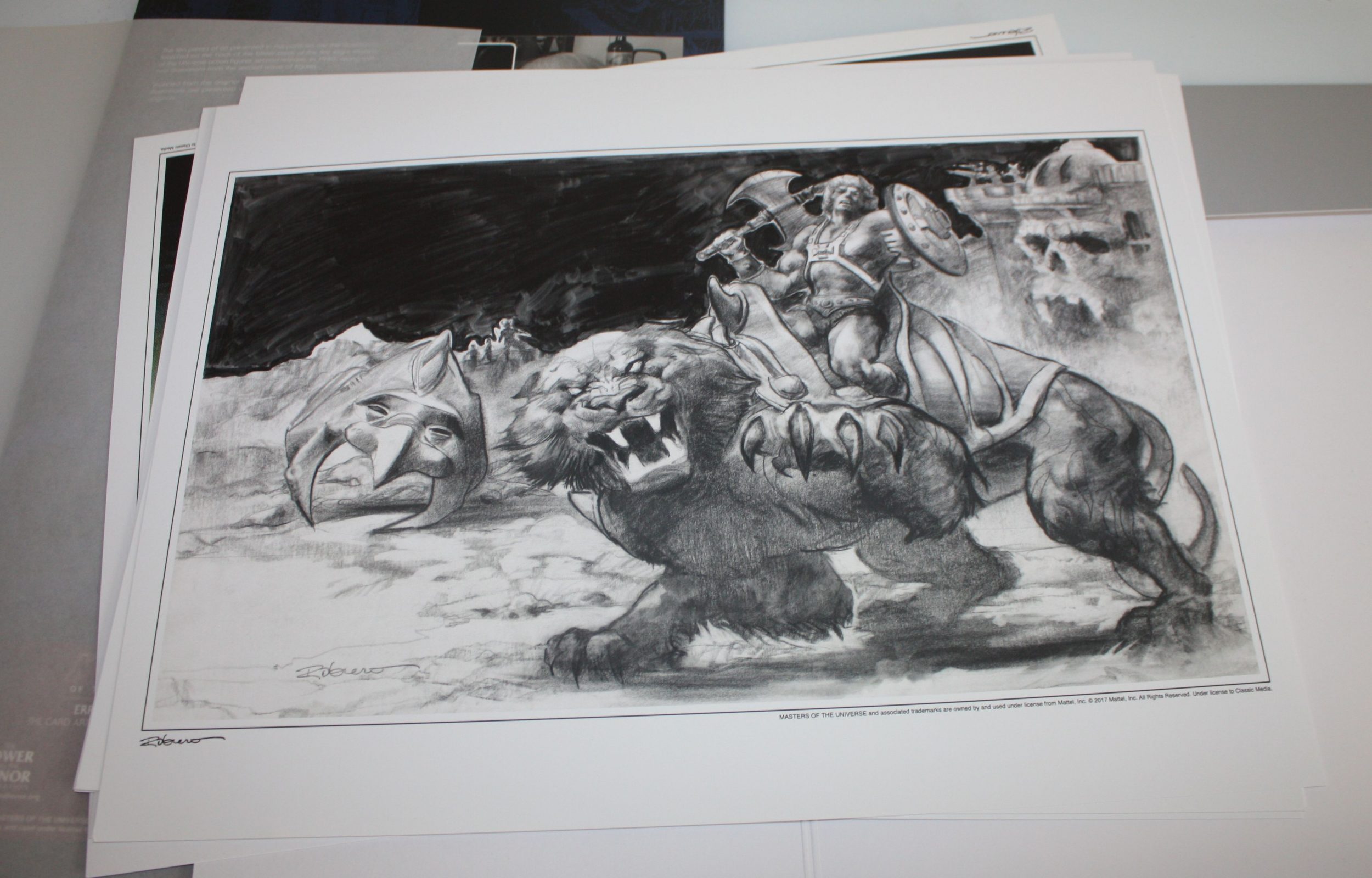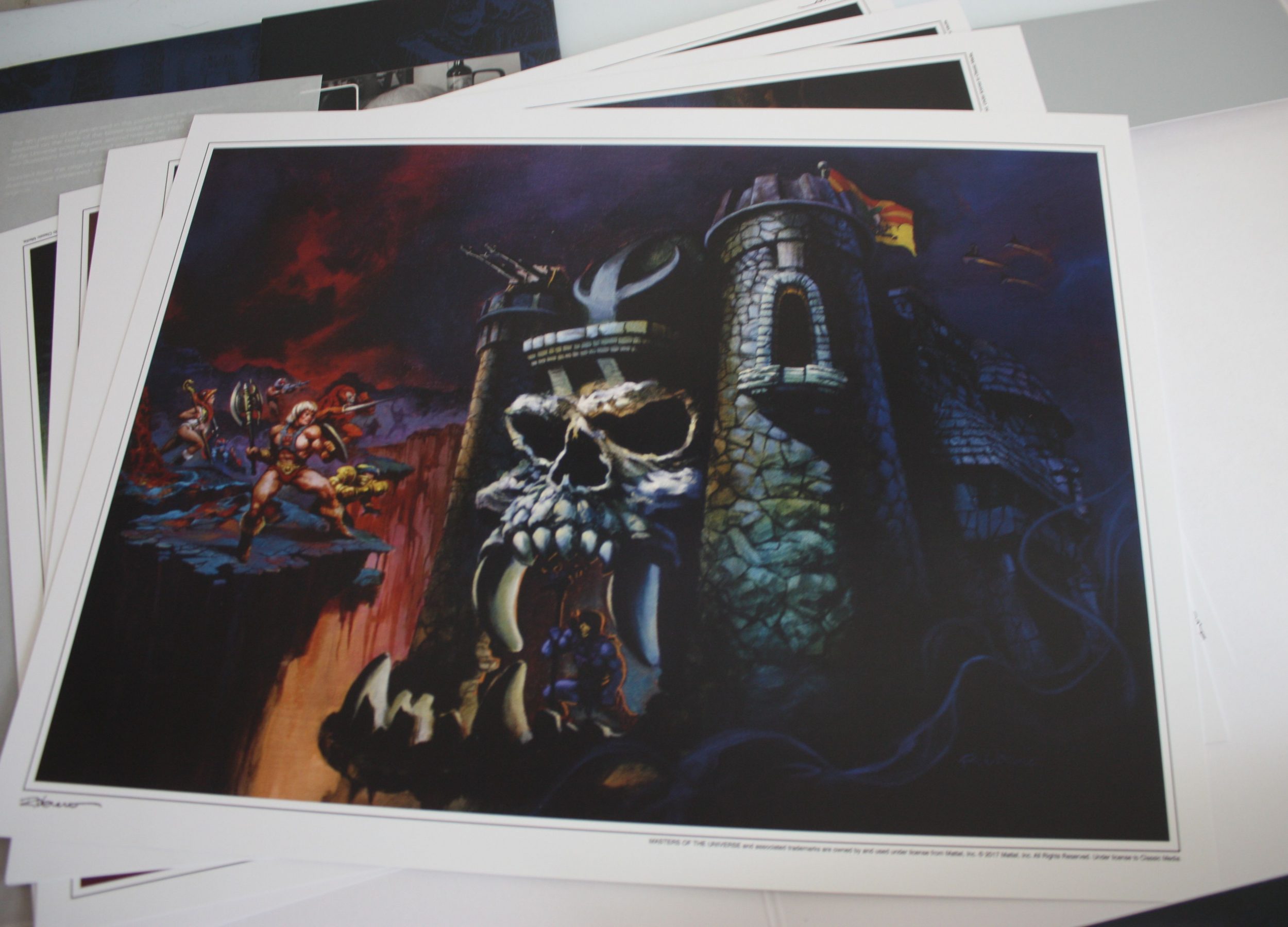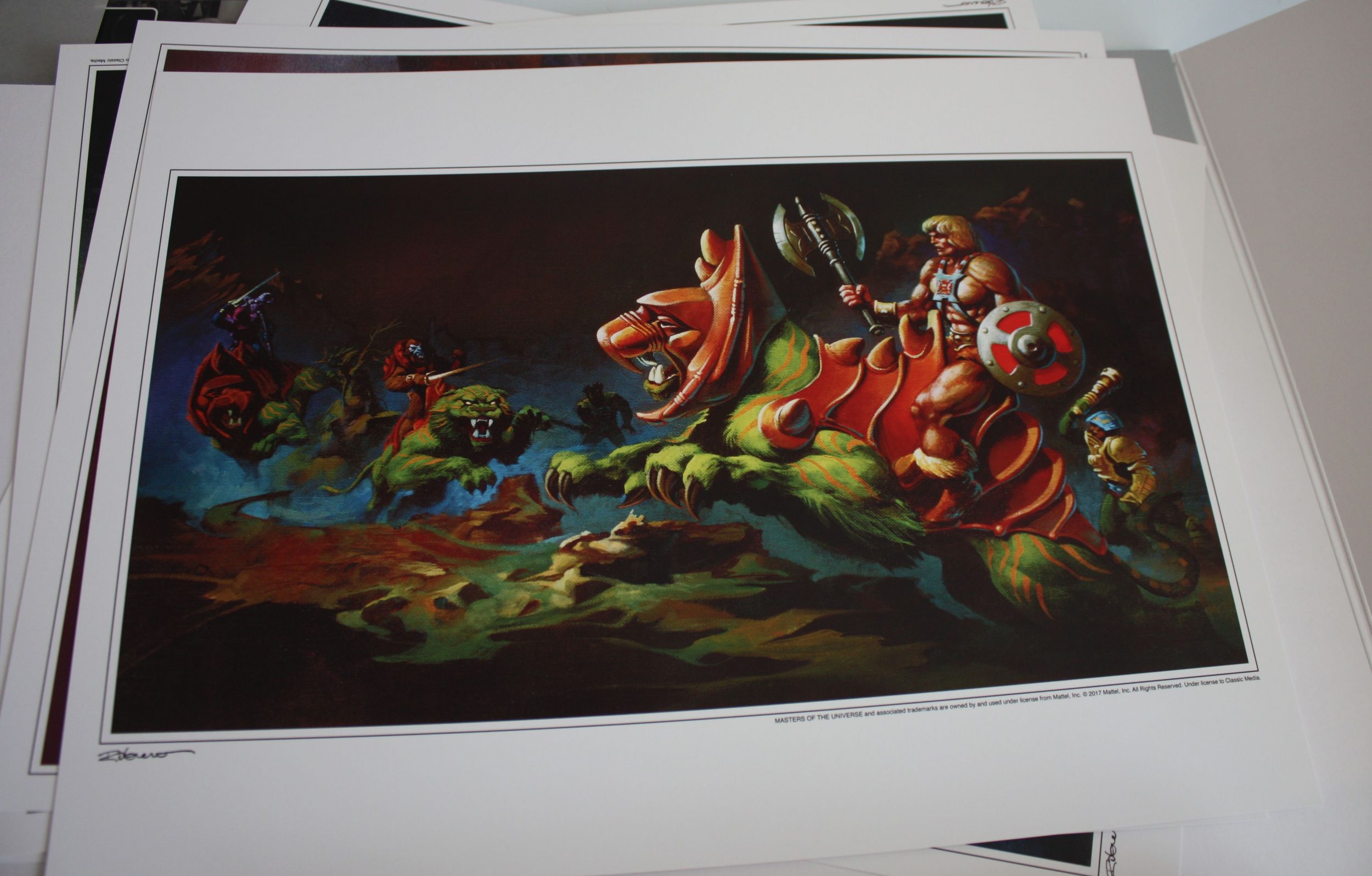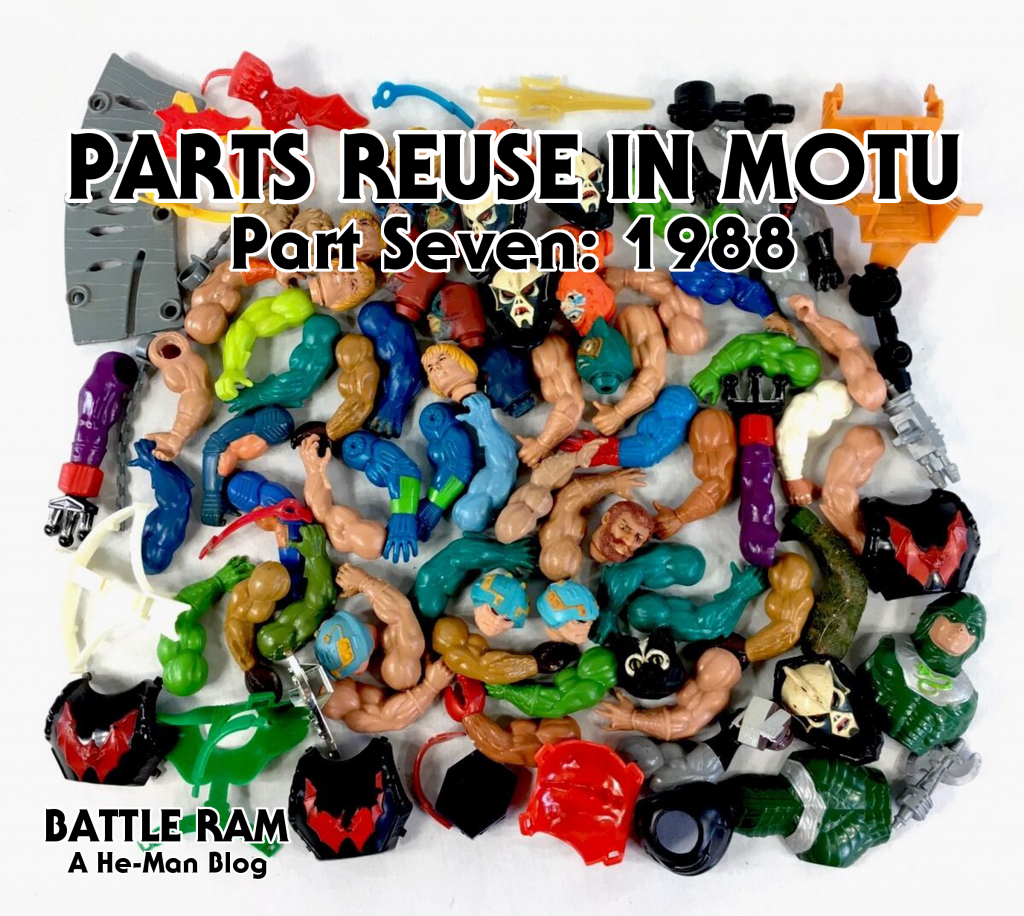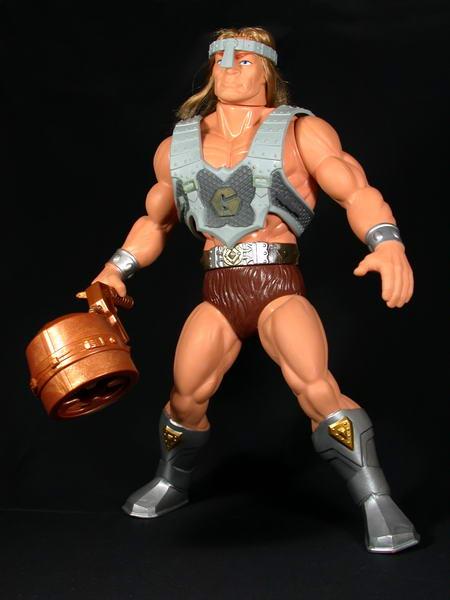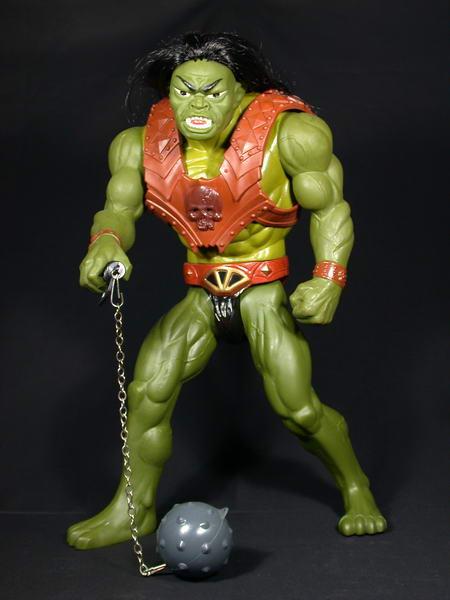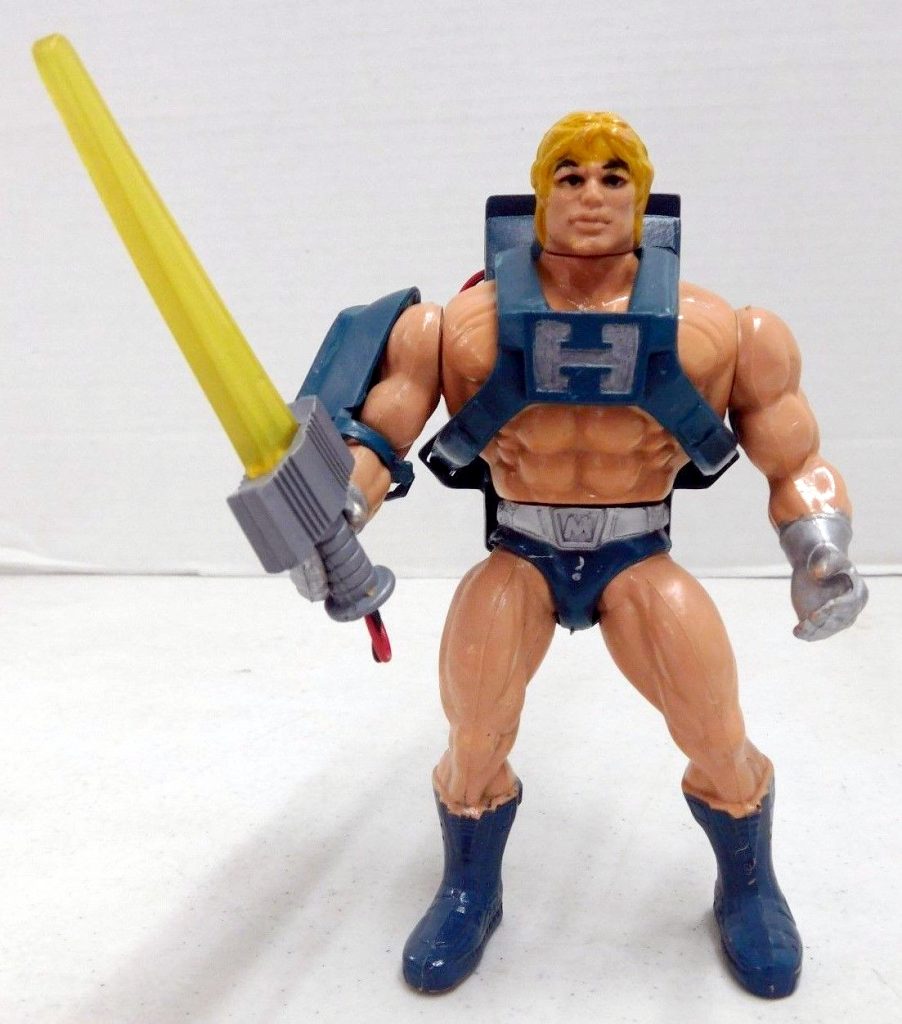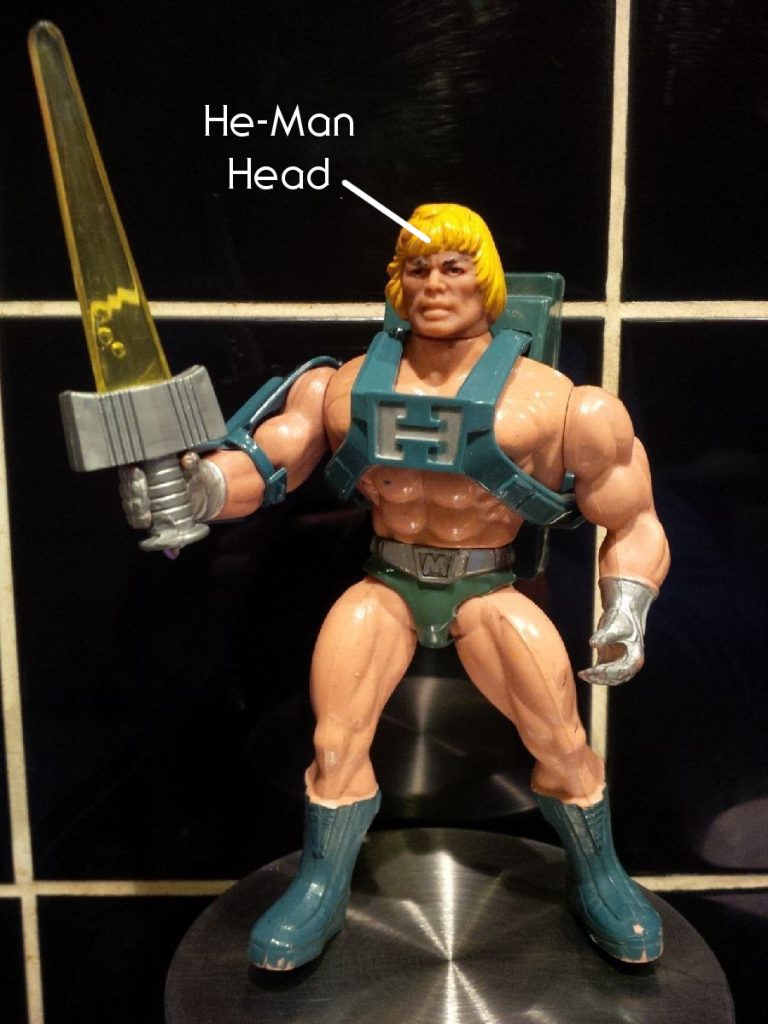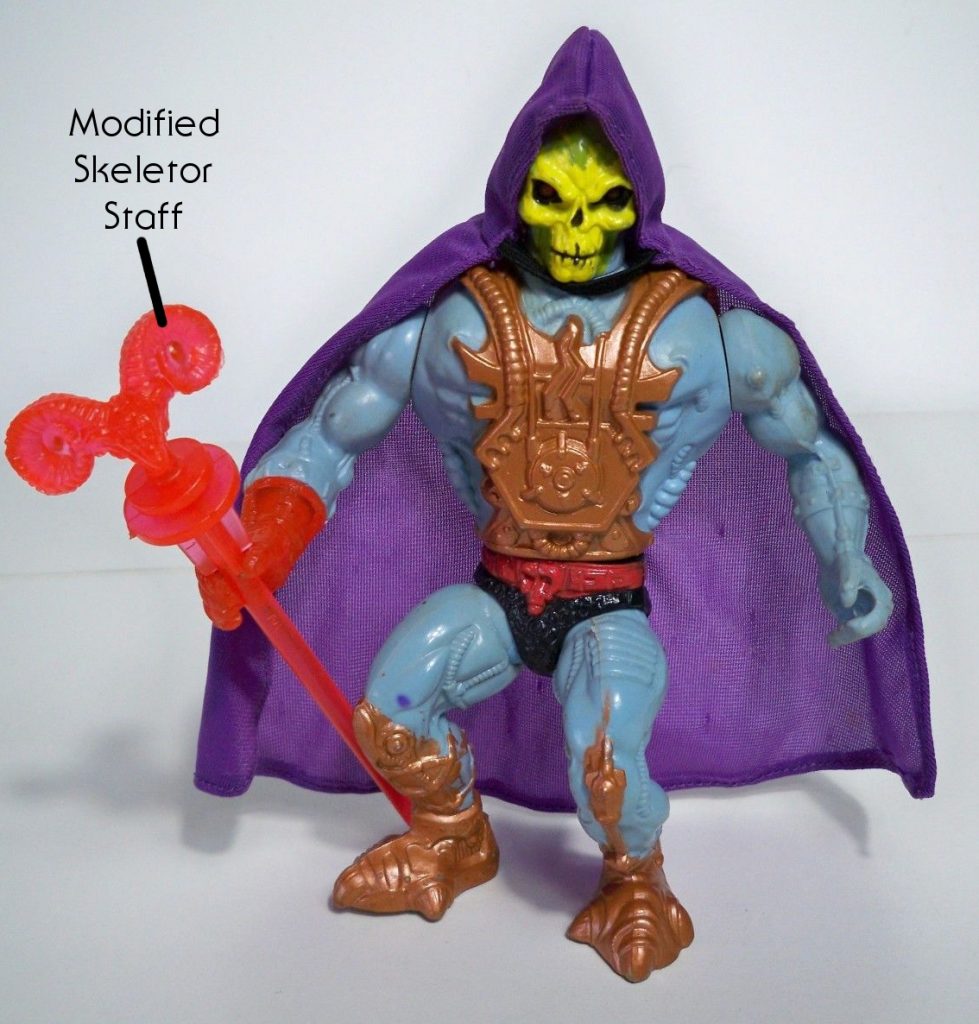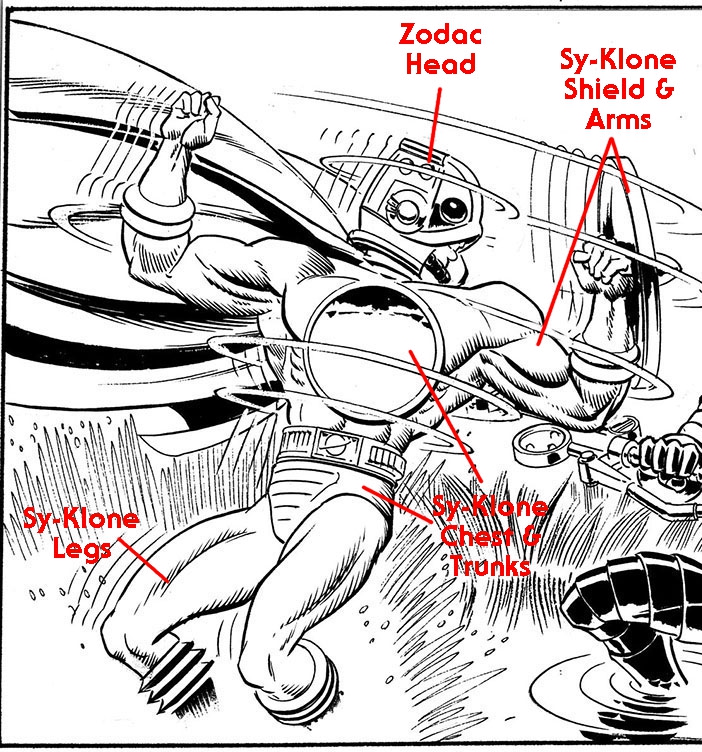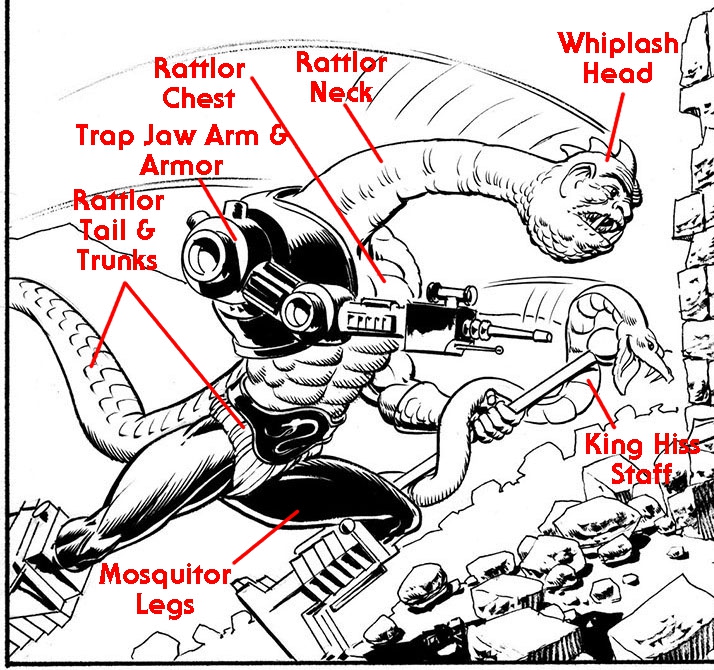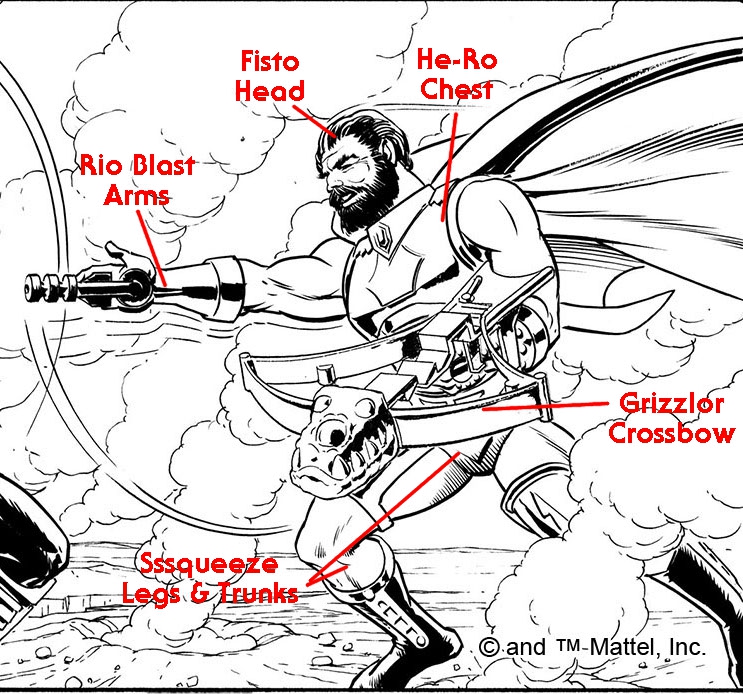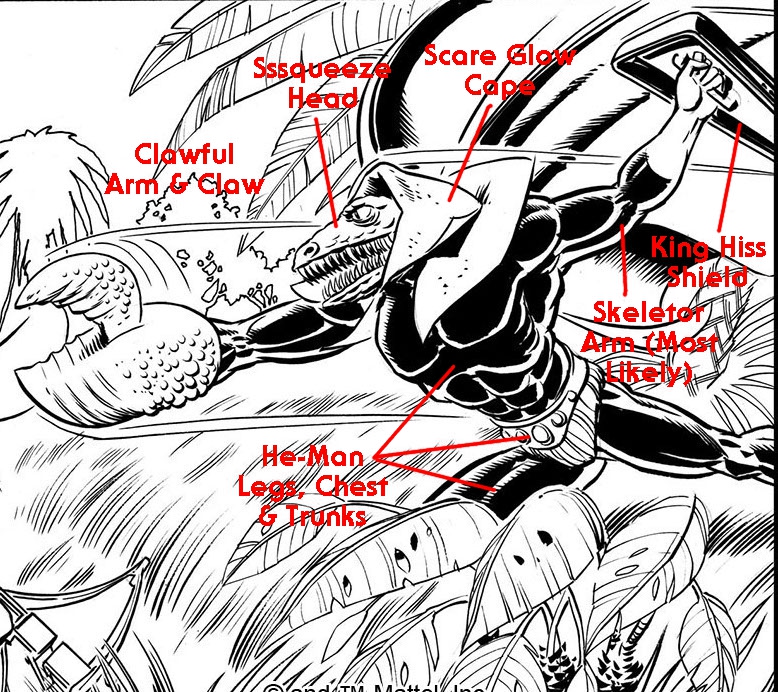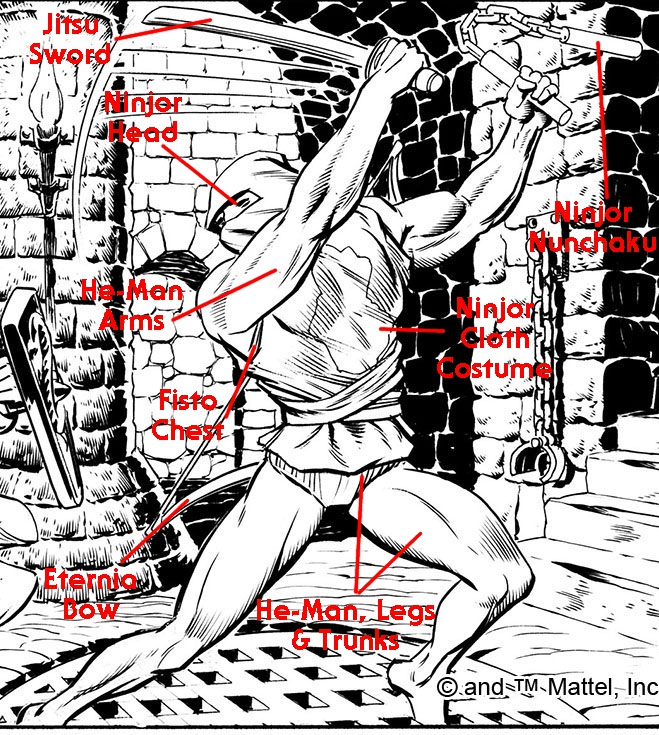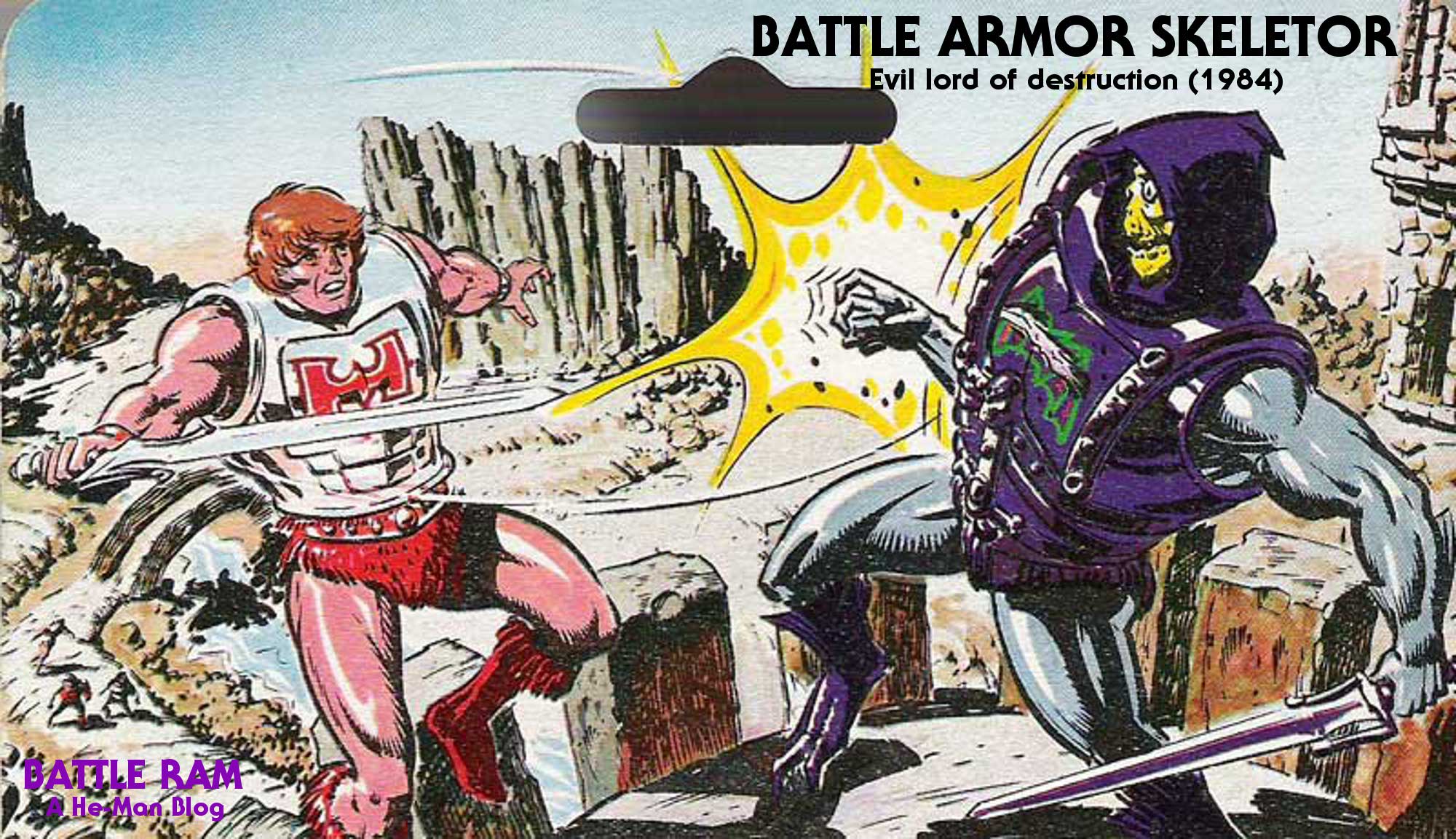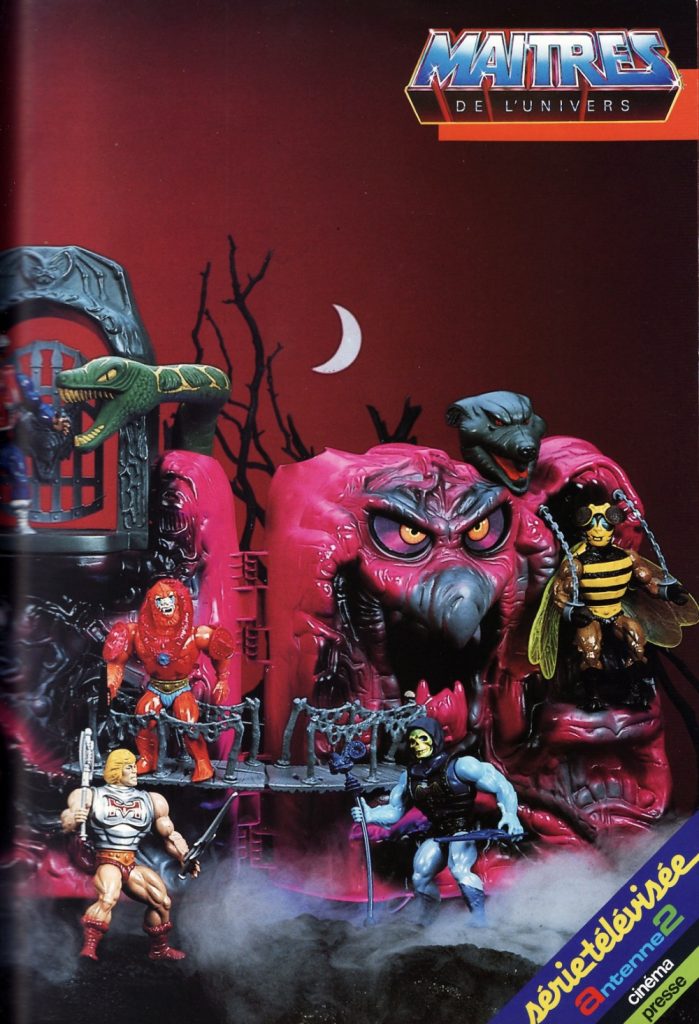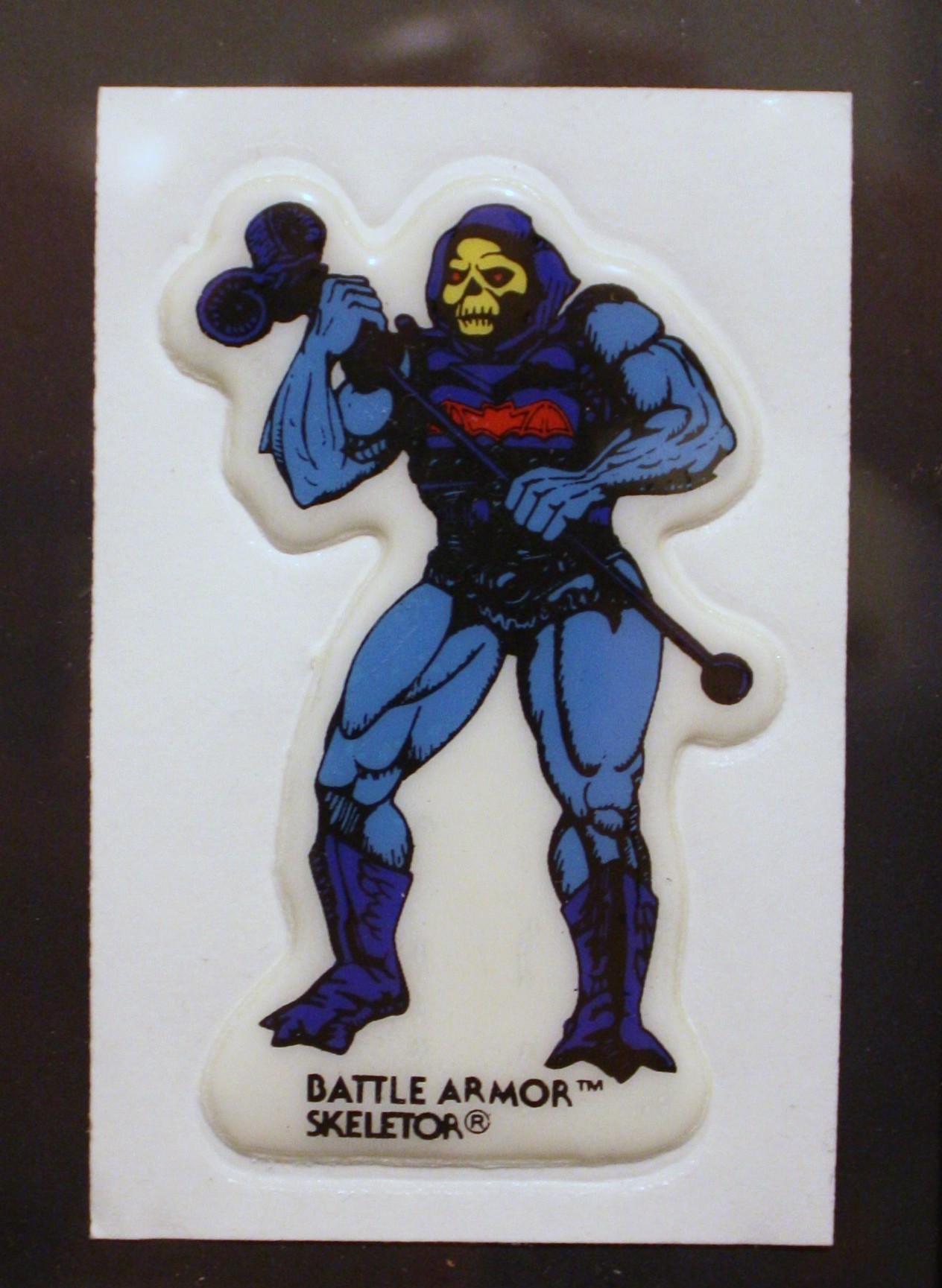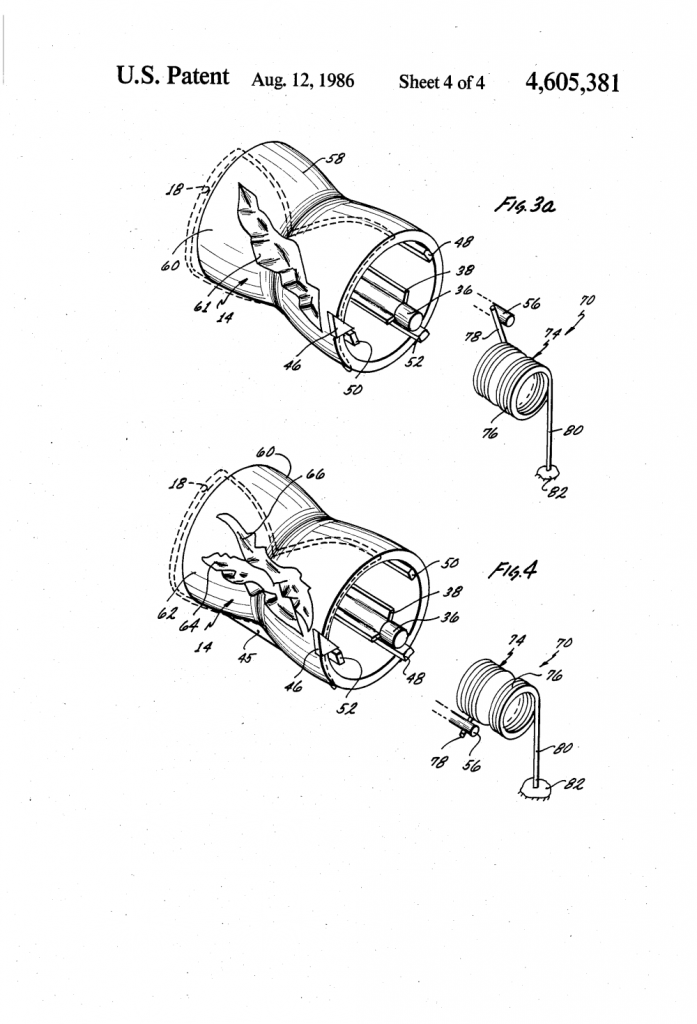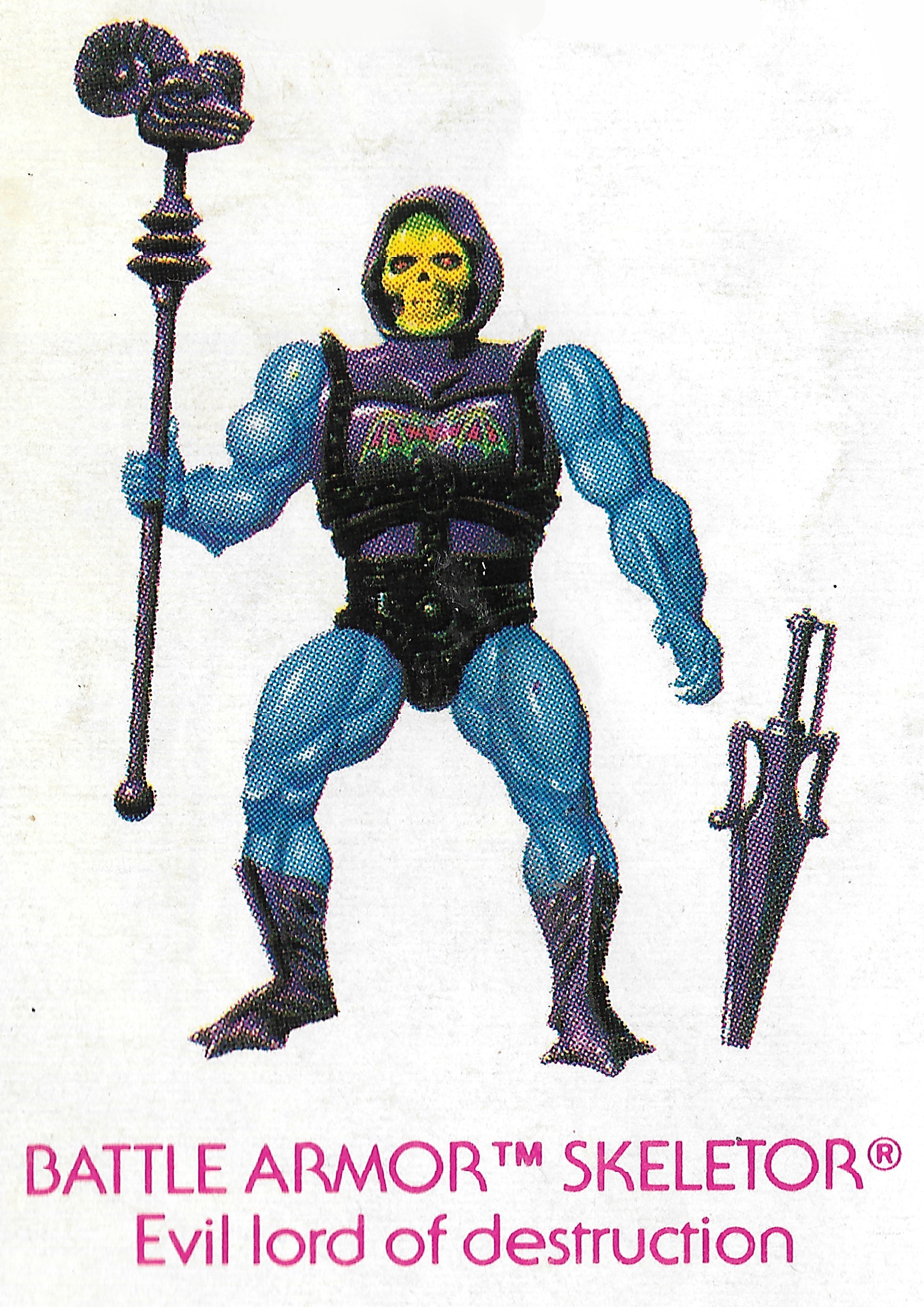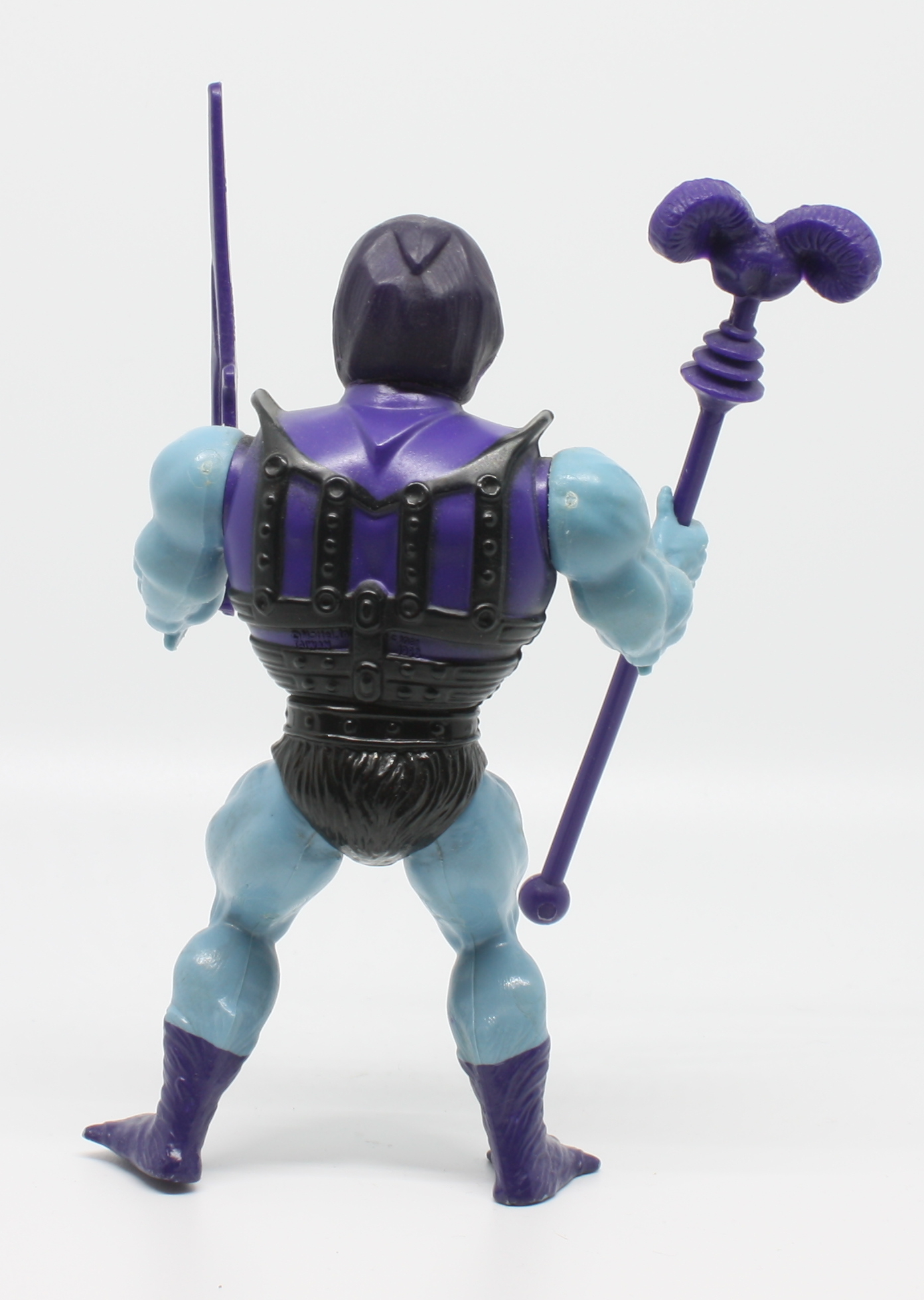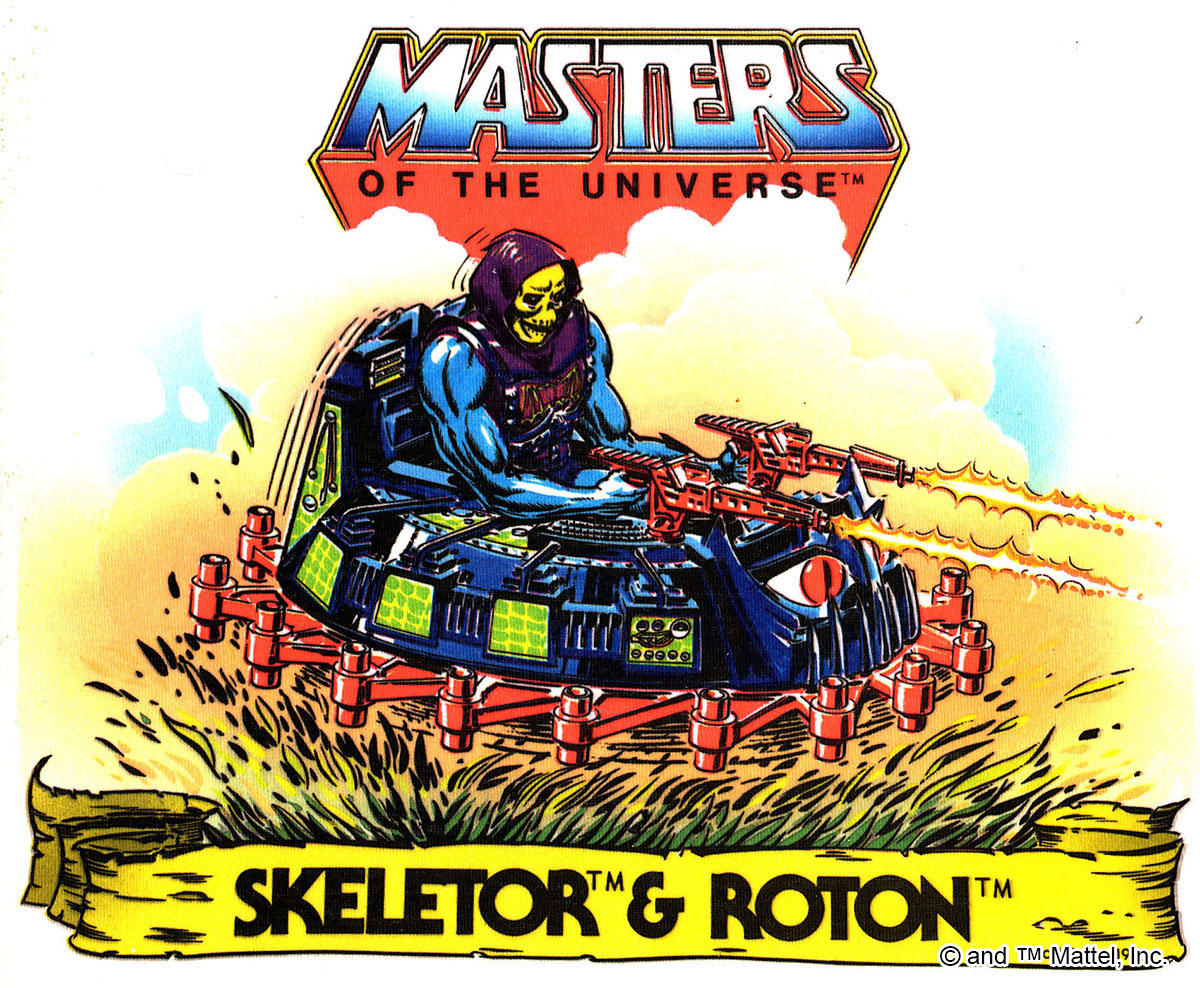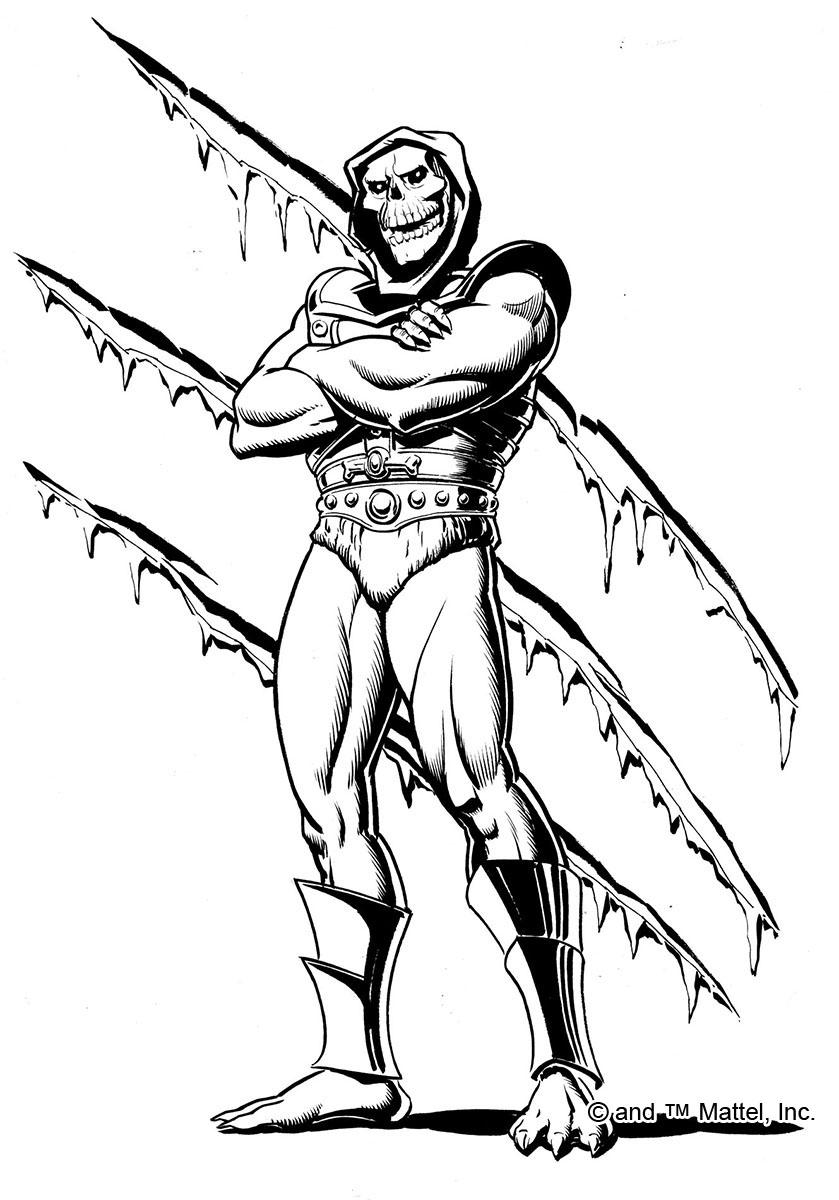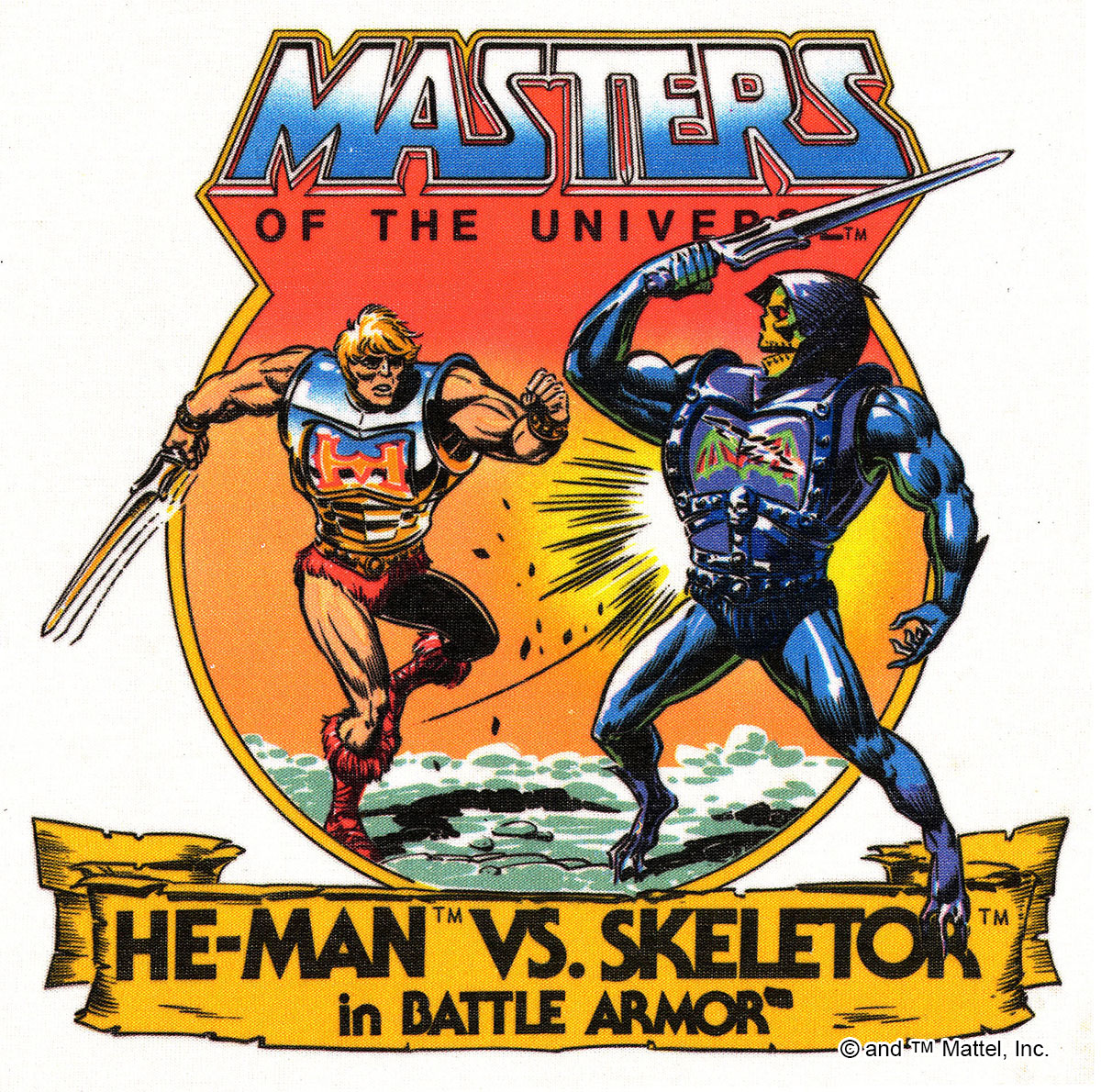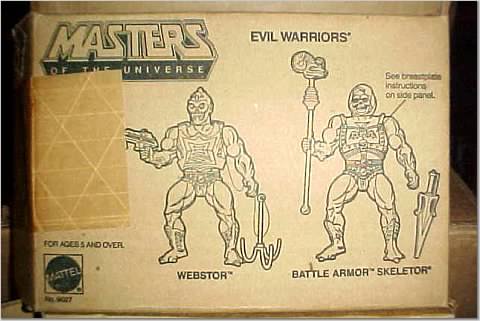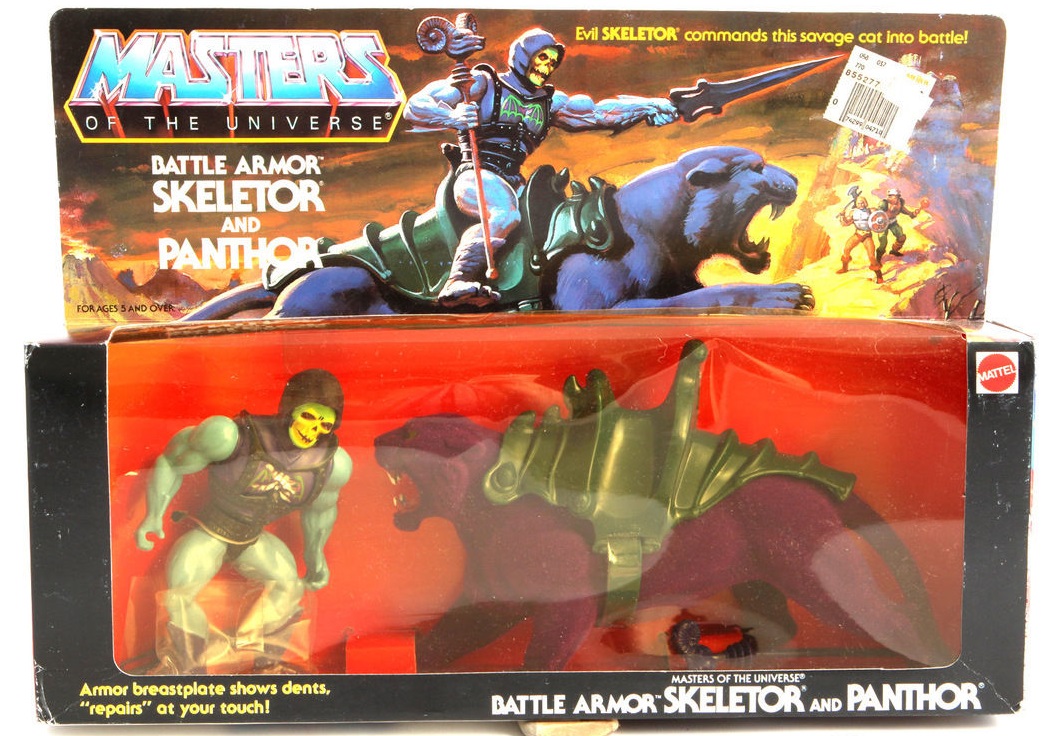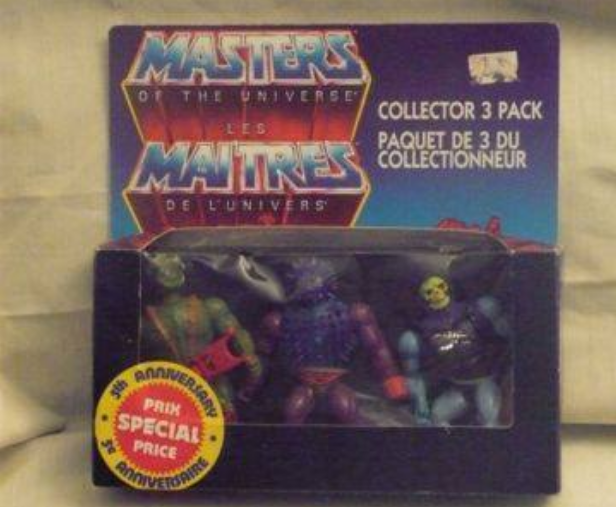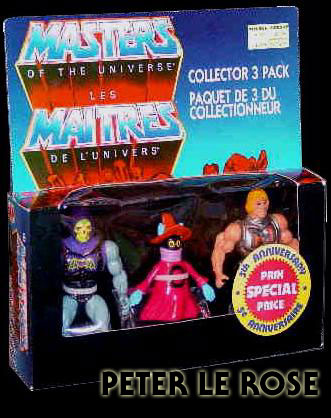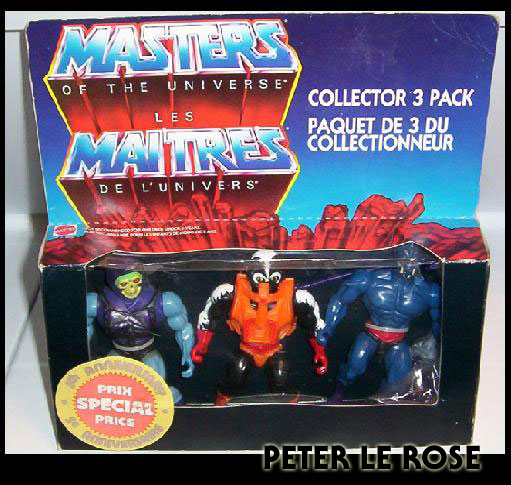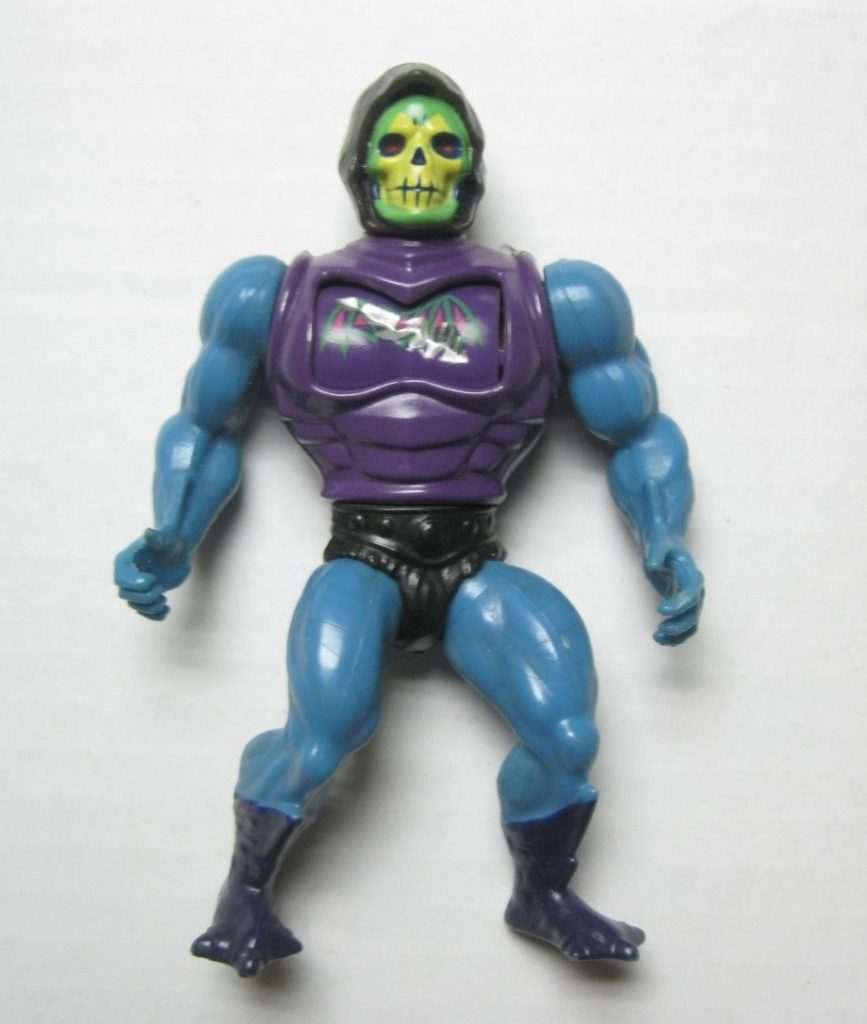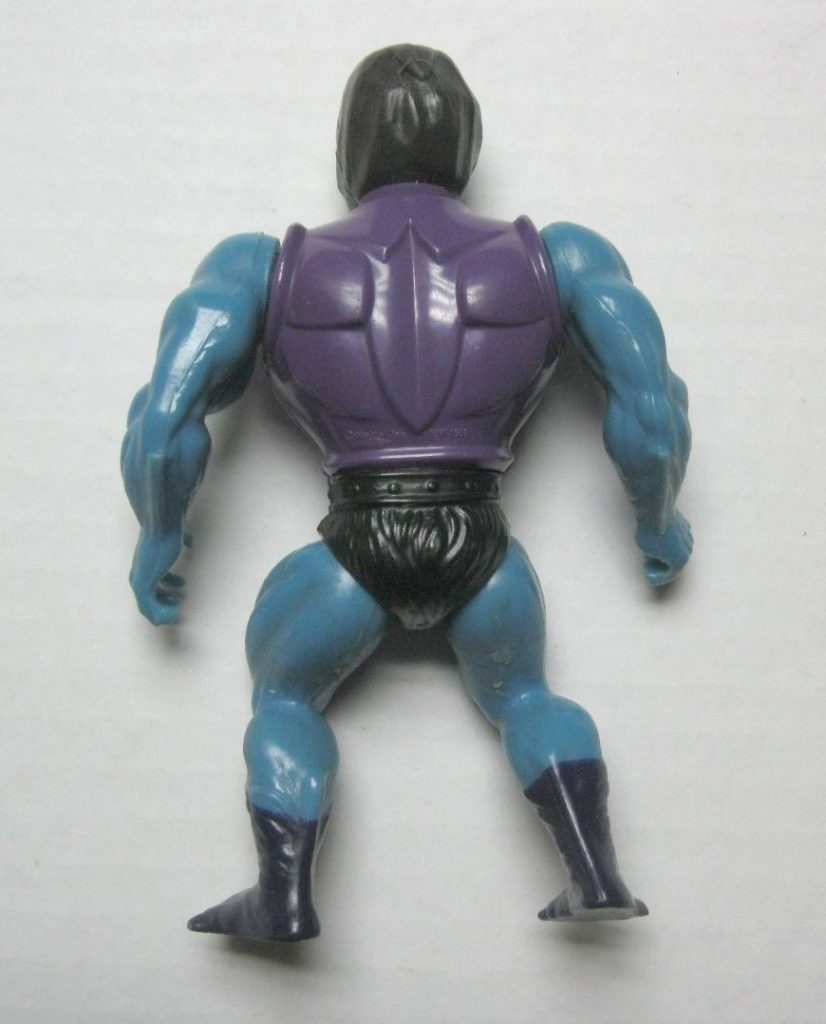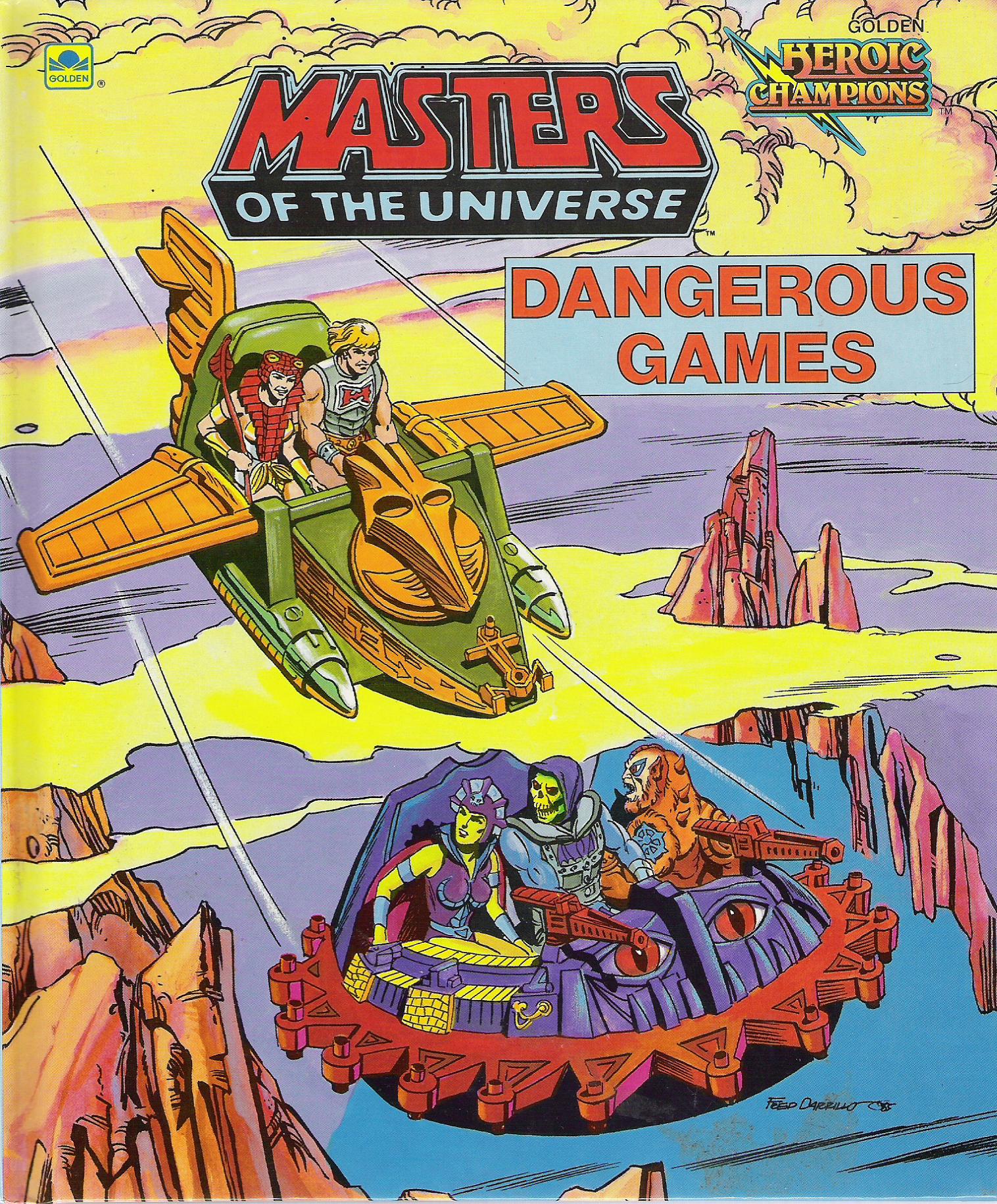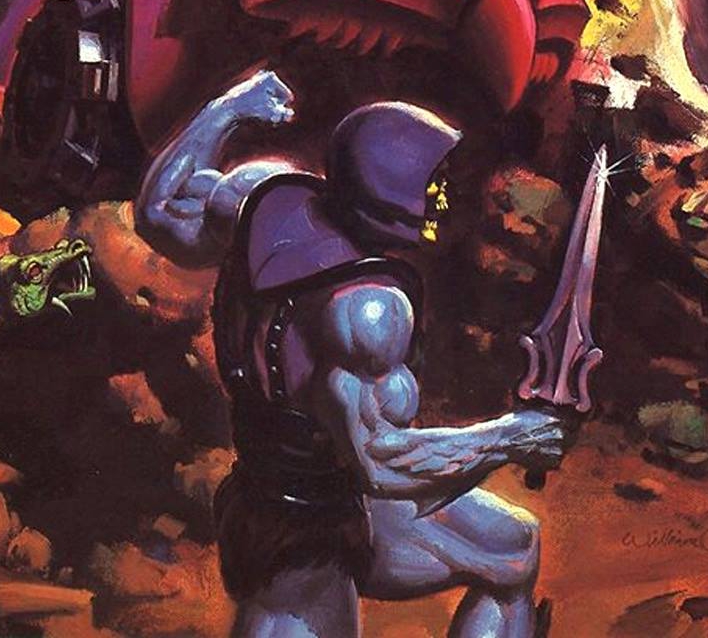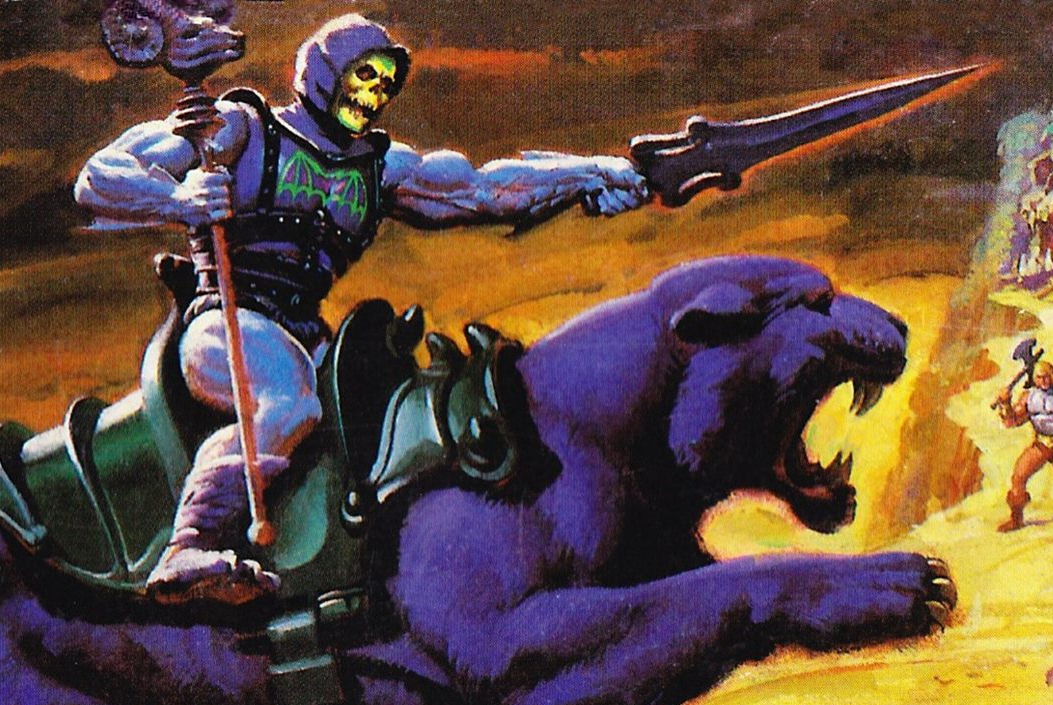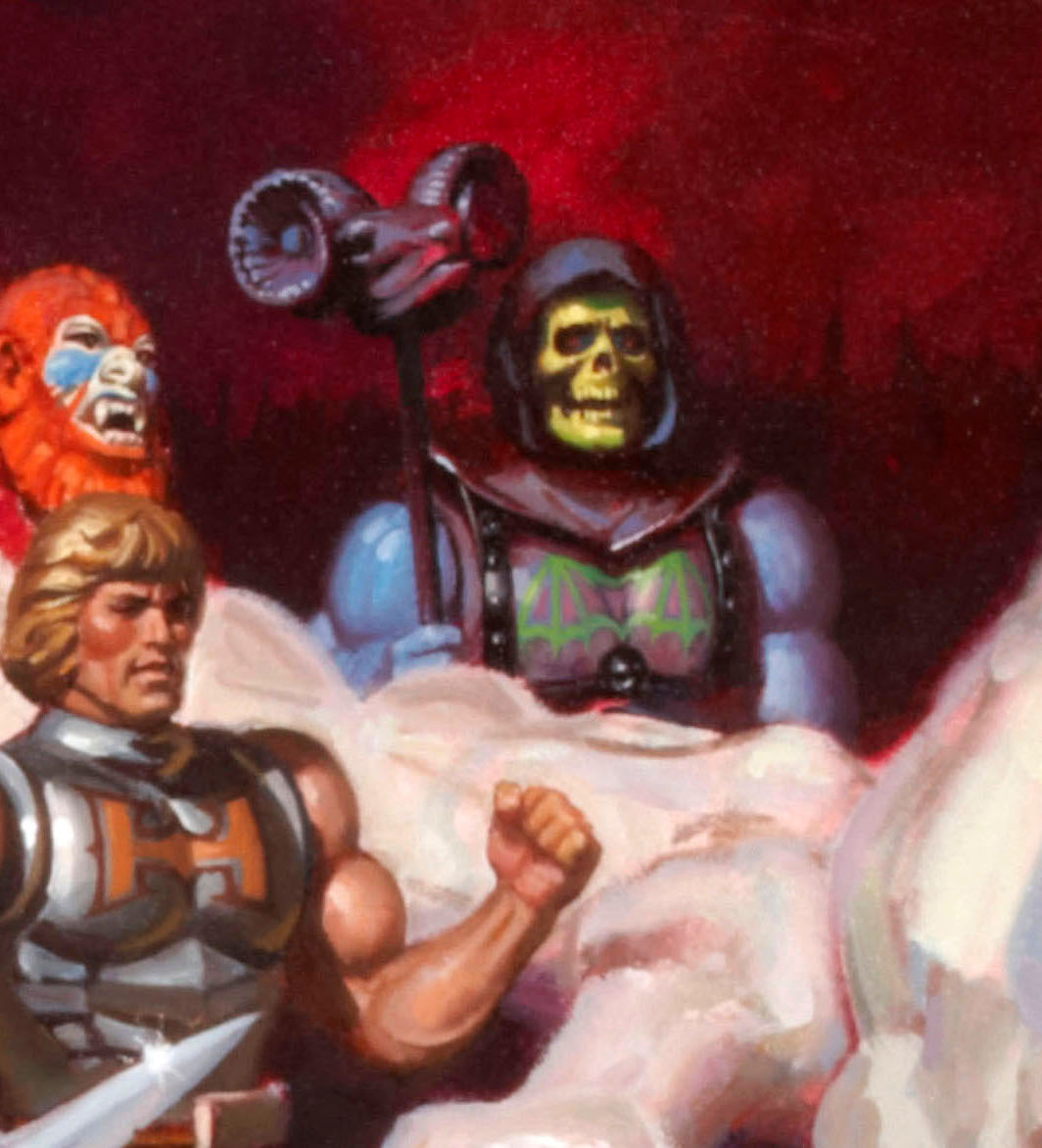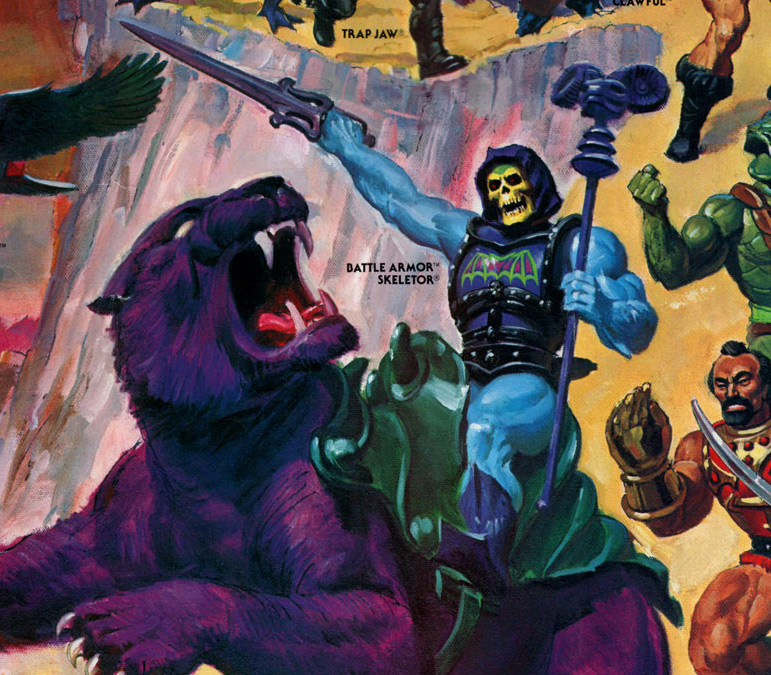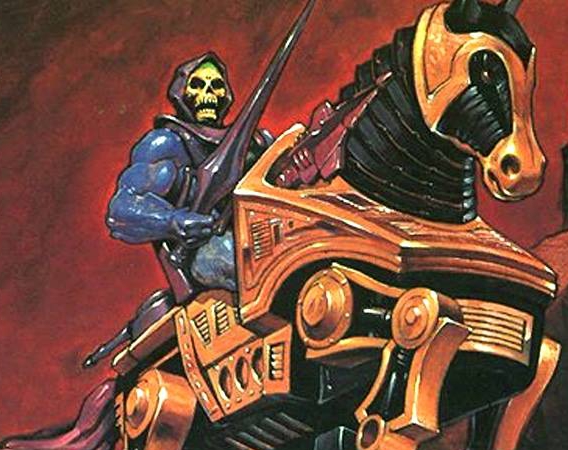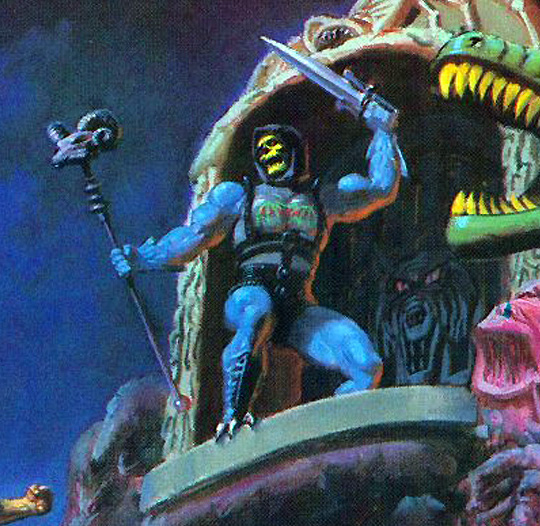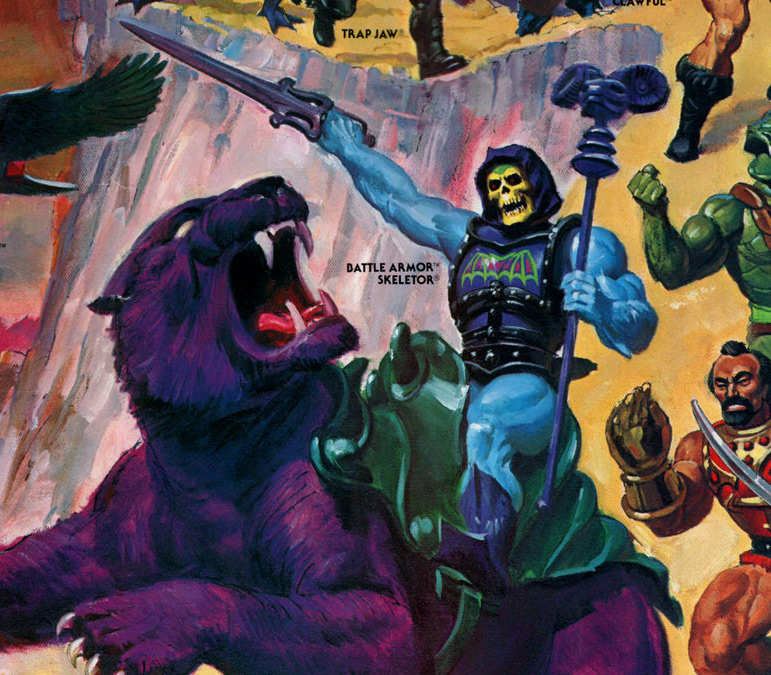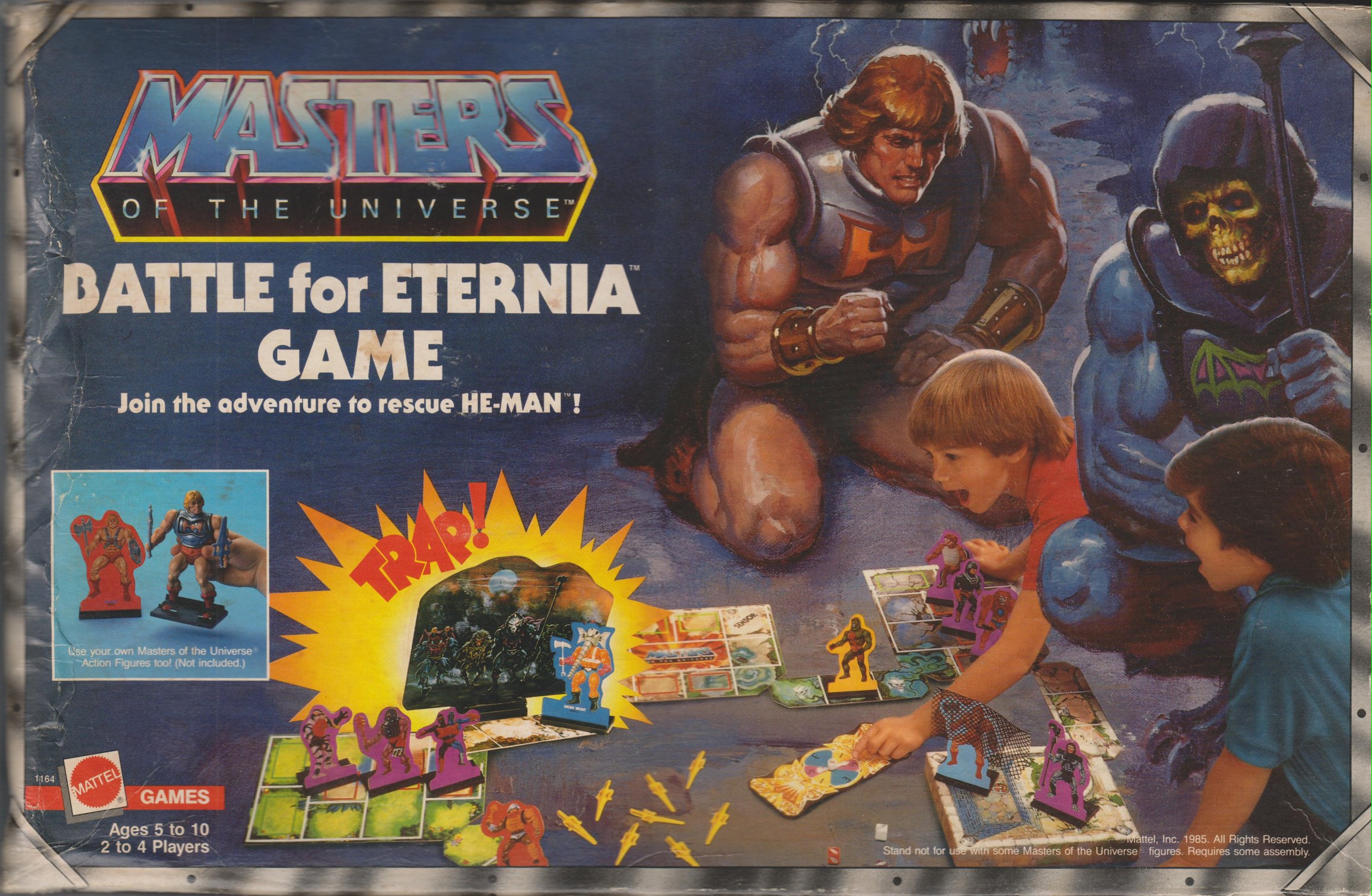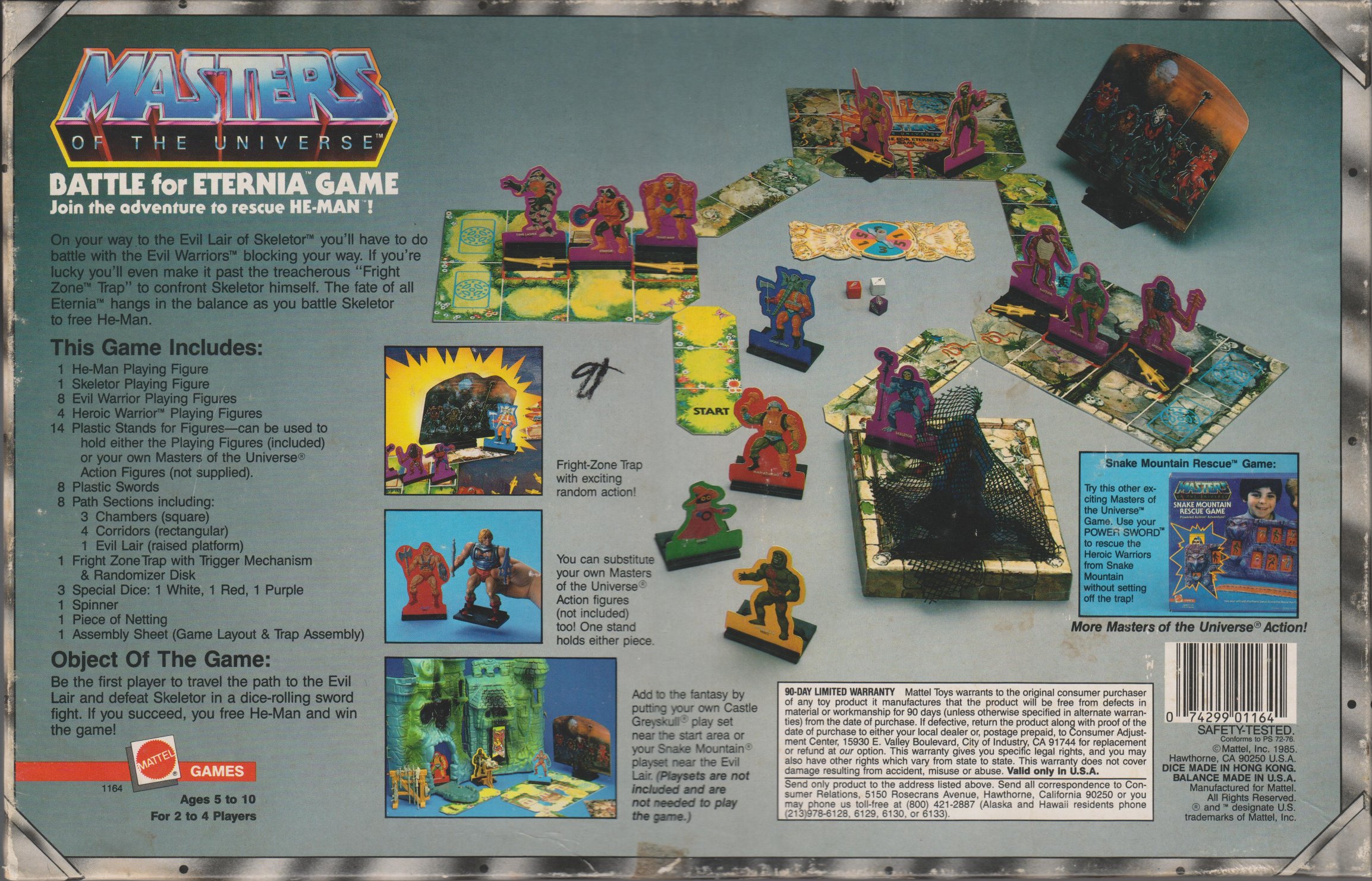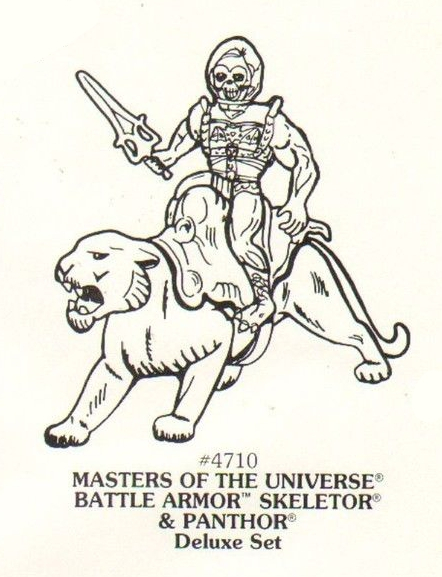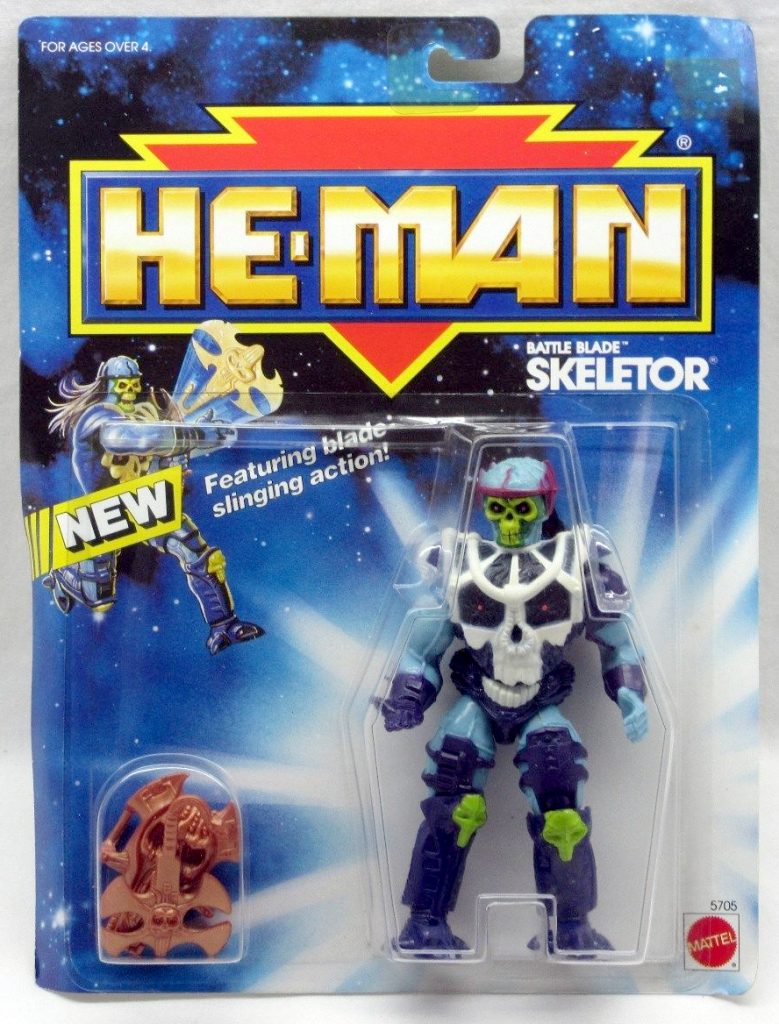
Battle Blade Skeletor is the last Skeletor variant produced in the New Adventures of He-Man toyline. This is probably an odd place to start my foray into this series of toys, but I’ve been slightly obsessed with this figure since I first encountered it in a vintage toy shop a couple of years back. Part of it is I think there is something in the face that reminds me of Laser-Light Skeletor – another figure I’m obsessed with.
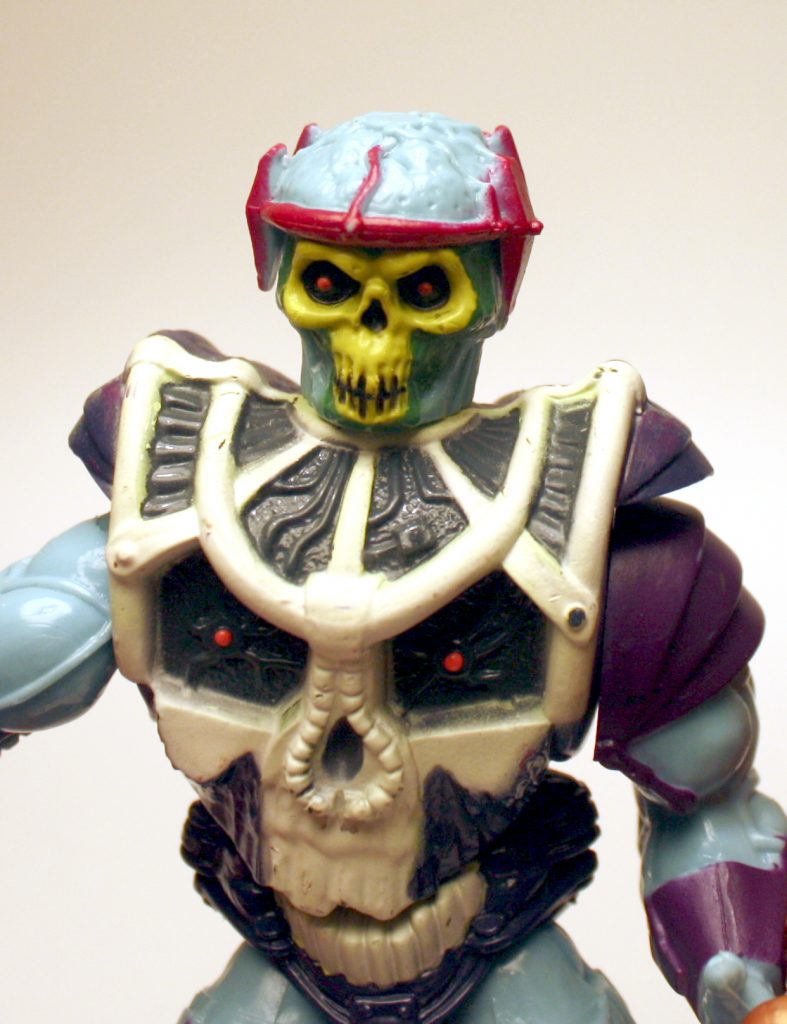
Because the figure came out at the tail end of the New Adventures line (actually simply called He-Man, but most fans call it New Adventures of He-Man after the associated cartoon), there isn’t any real media or stories to go along with him, at least that I’ve been able to find.
Like Laser-Light Skeletor and the other New Adventures versions of Skeletor, Battle Blade Skeletor was designed by David Wolfram. He bears all the hallmarks of Wolfram’s style, including the narrow lower face, tech-infused body and suit, and generally creepy, asperous design language.

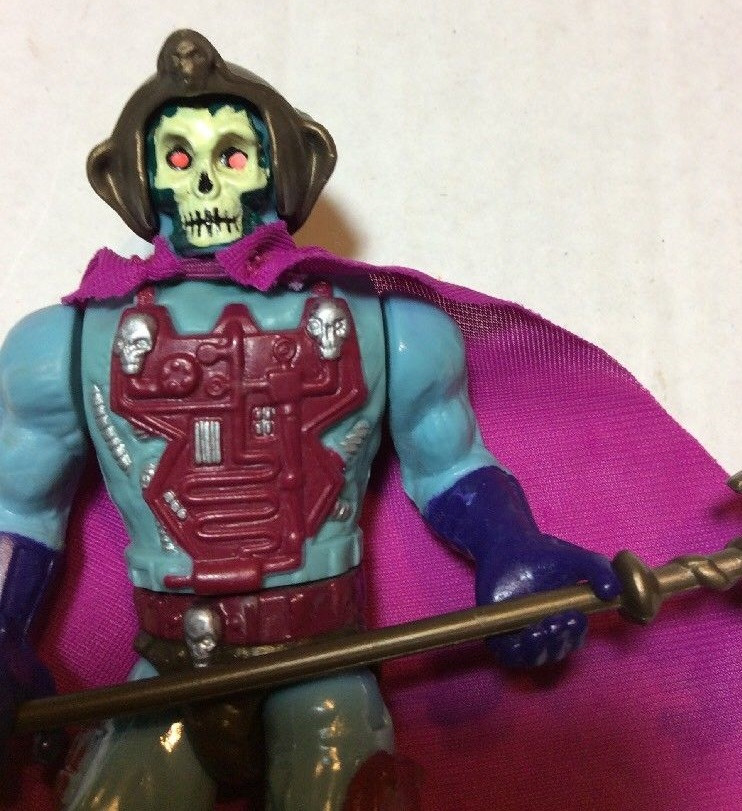
All of the Wolfram-designed Skeletor variants depict him has having a skull face, but not a full skull head. In other words, his head (face excluded) has the same blue skin as the rest of his body. I had always assumed that his entire head was a skull, and that’s how he is is depicted in Danger At Castle Grayskull, illustrated by Alfredo Alcala:
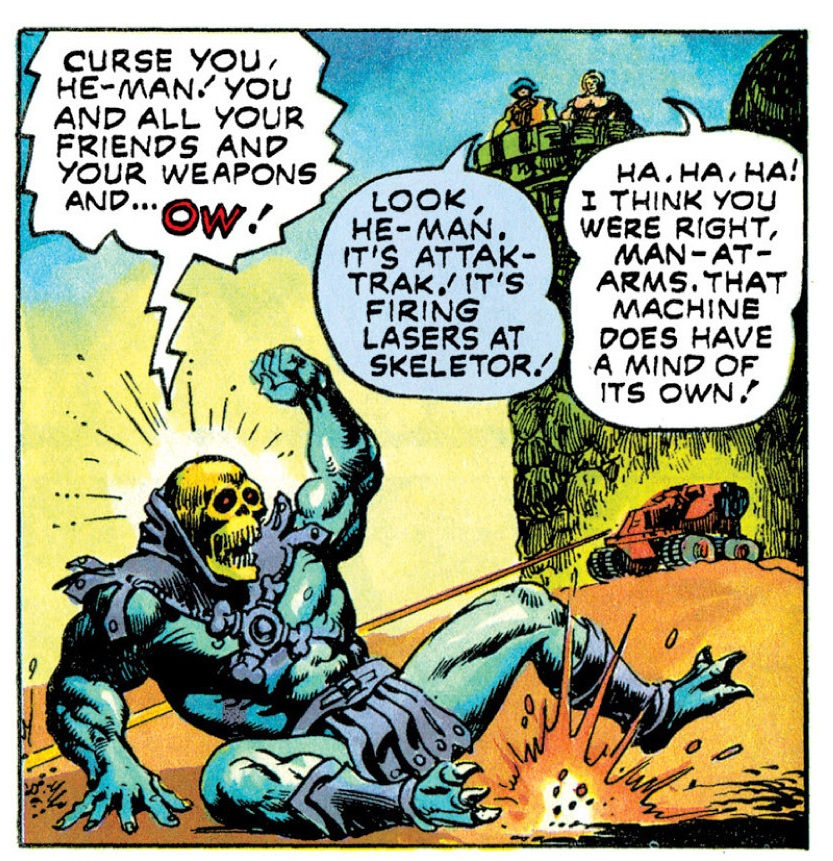
This early sketch of the figure by David Wolfram (digitally colored long after it was drawn) shows a nearly finalized design. The bottom jaw on the skull costume is located a bit higher, but otherwise this is very close to how the action figure looked in production. Notice the scraggly hair on the drawing. That shows up on hand-painted prototypes, but on the production figure it was straight.
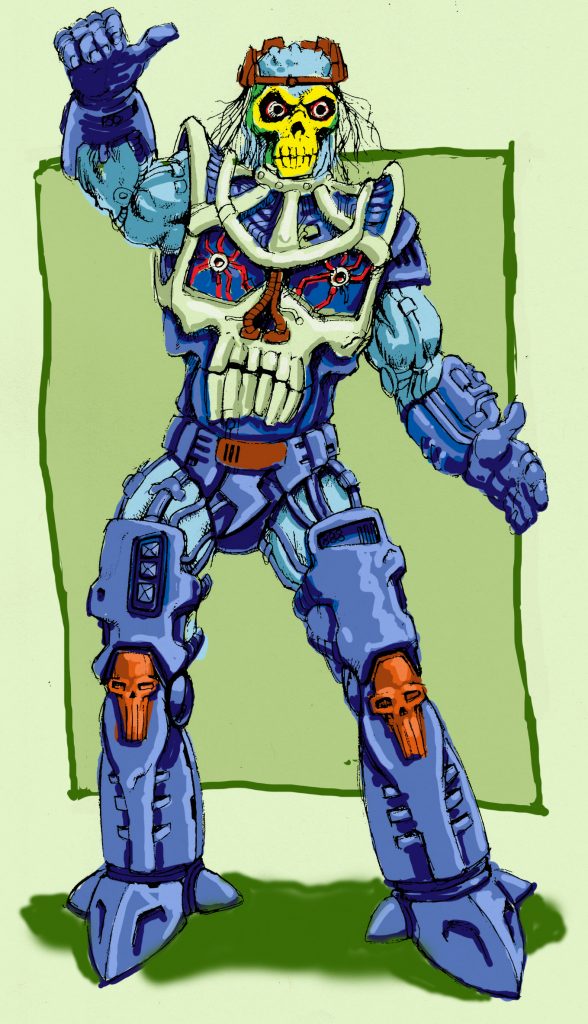
Regarding the figure’s hair, David (in the comments) had this to say:
The hair on BB was supposed to be a lot gnarlier, but we had to work with someone from the Barbie group, who couldn’t give me what I was looking for- they only did pretty.
Battle Blade Skeletor has some general elements in common with his predecessor, Disks of Doom Skeletor – also designed by Wolfram. Both have star shaped boots, recalling the feet of characters like Buzz-Off and Whiplash. Both have tall boots and a skull themed costume, but Disks of Doom Skeletor’s costume looks more “heavy industrial” (particularly around the torso):
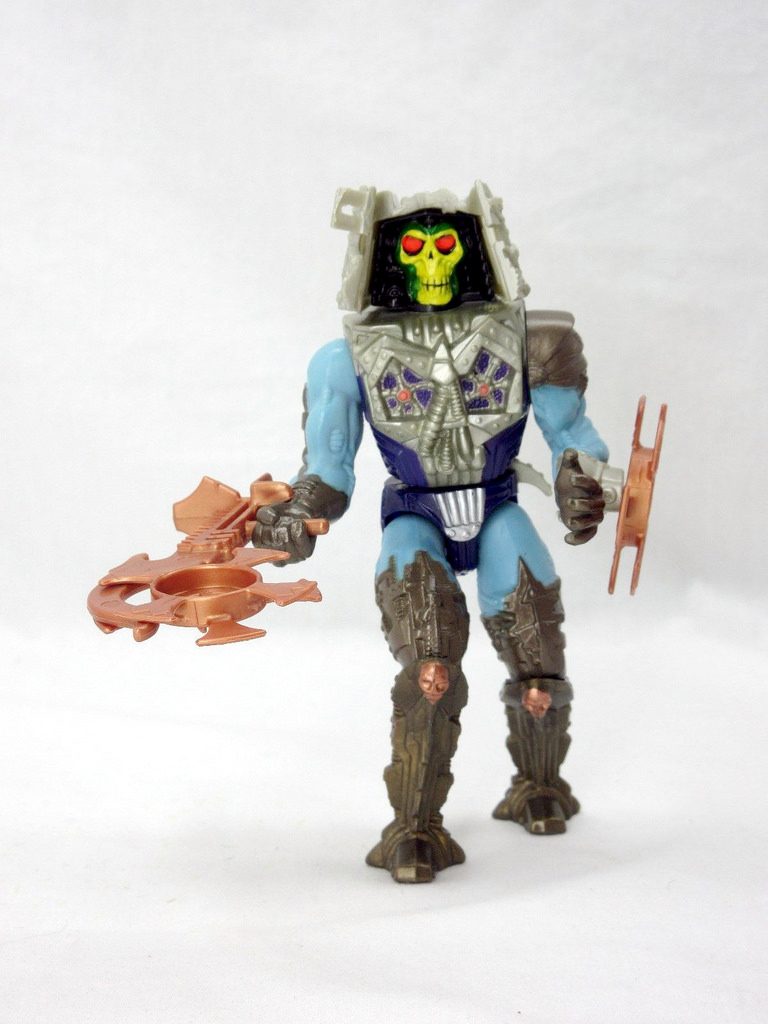
Curiously, a similar design is present in the principle villain (illustrated version) in Phantasy Star III: Generations of Doom (thanks to Stradlemonkey for pointing this out). The game was released in 1990, the same year as Disks of Doom Skeletor. Disks of Doom Skeletor’s trademark was filed on November 16, 1989, so I would guess Mattel’s design came first.
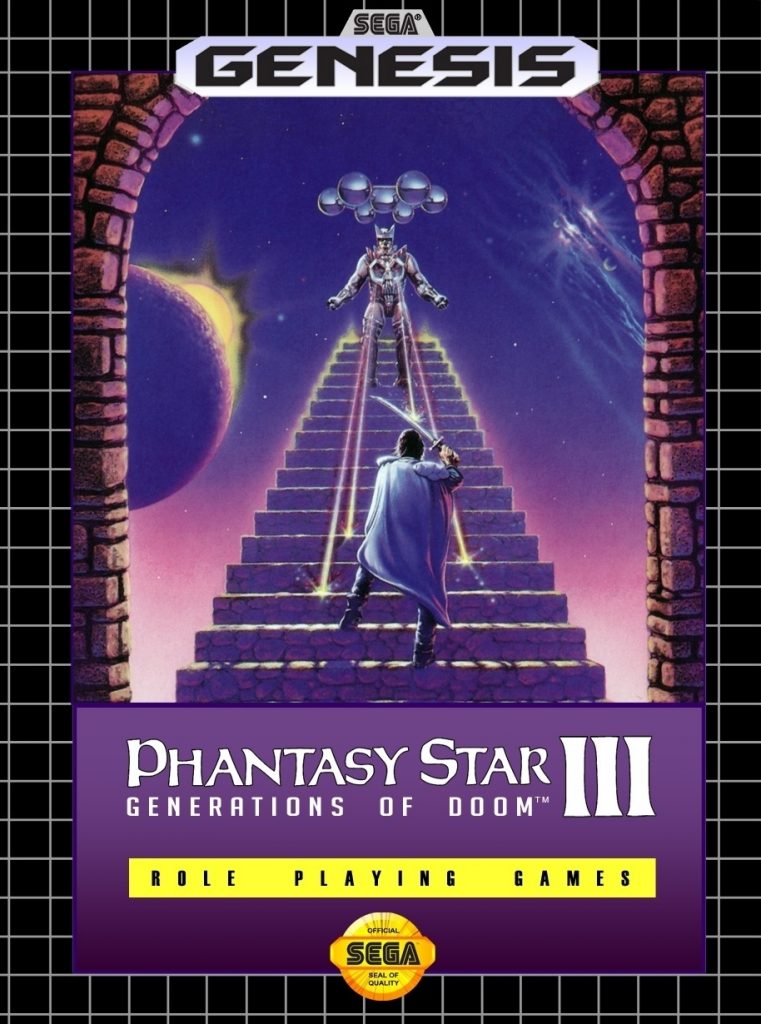
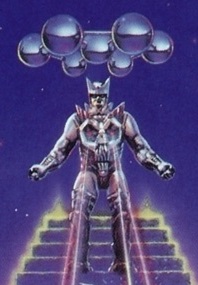
We might also see some early iteration of the concept in the artwork below by Errol McCarthy. Errol says he just did illustrations for New Adventures of He-Man, and was never a designer of the characters. In the art below, we see the skull motif again in Skeletor’s costume. In this instance Skeletor has a fully-robotic body. Interestingly he also has hair – a trait he shares with Battle Blade Skeletor.

We get a look at a hand-painted final prototype version of the figure in the 1991 German He-Man magazine below. This version has crisper paint as well as head articulation – the final figure has a static head (correction: some of them have a static head, while others have articulation). We also see an early version of Thunder Punch He-Man (the 1992 version). Both figures are quite a bit bulkier-looking than the 1989 versions of He-Man and Skeletor. I think Mattel was trying to capture a little of the chunkiness and heavily-muscled appearance of the original 1982 He-Man and Skeletor figures here.
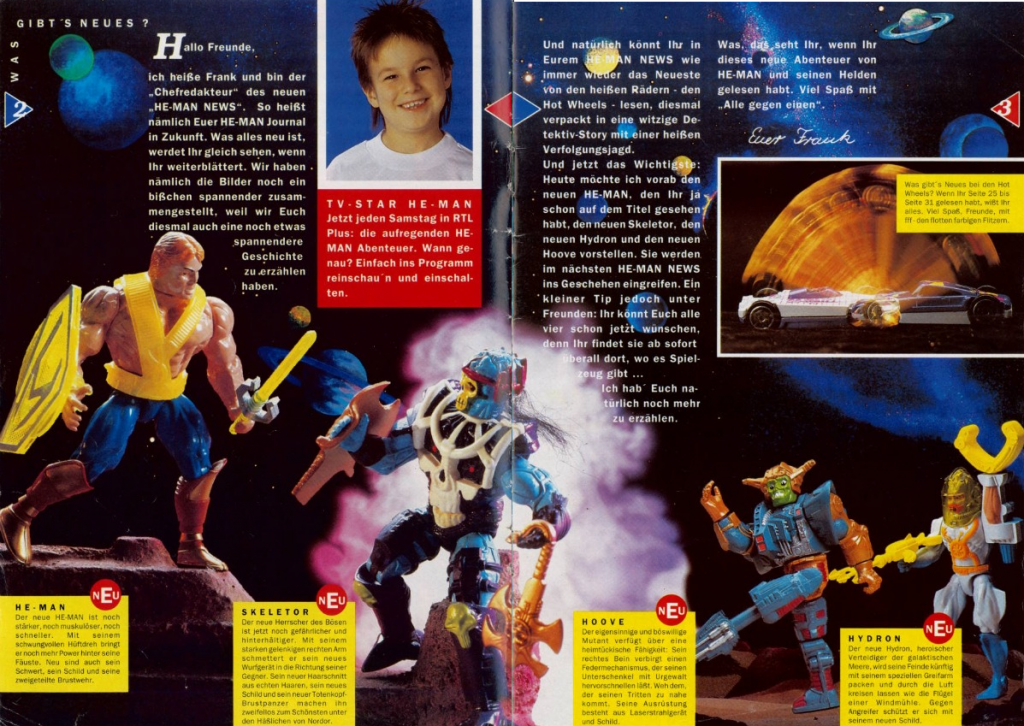

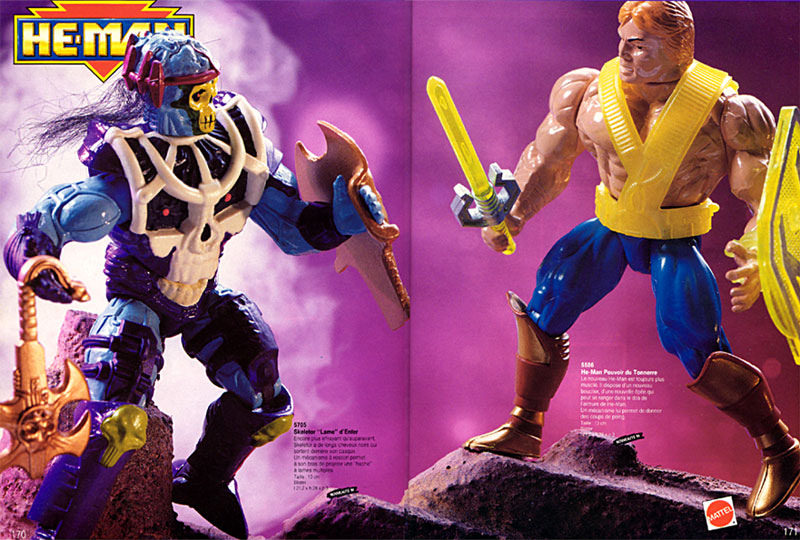
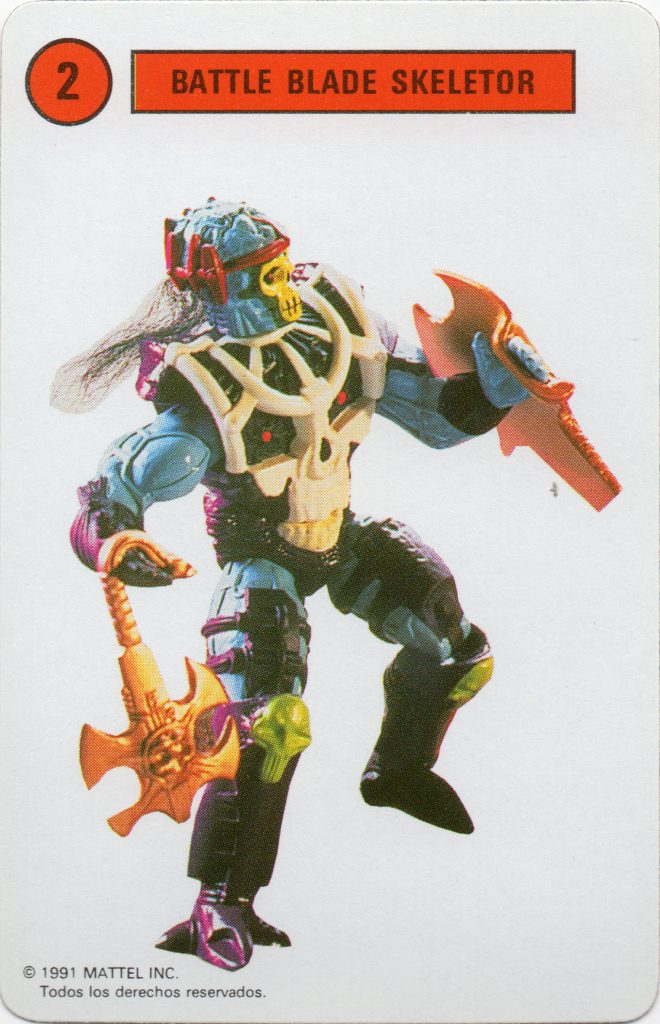
Update: Spartacus McFeely recently acquired a hand-painted hard copy/prototype from Martin Arriola. His pictures of it are below, along with a picture of his 1992 Thunder Punch He-Man prototype figure.


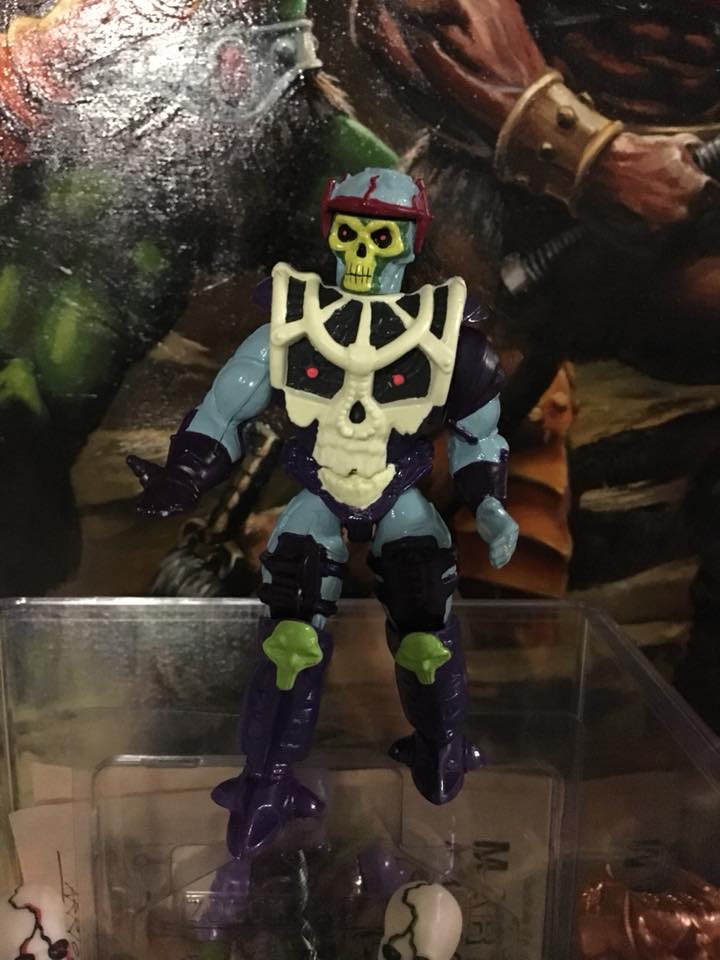




Skeletor is described in the German magazine, roughly translated, like this:
The new ruler is now even more dangerous and ambitious. With his strong articulated right arm he smashes his new throwing machine in the direction of his opponents. His new haircut of real hair, his new shield and his new skull and crossbones make him undoubtedly the most beautiful among the Nordor.
An exploded view of Battle Blade Skeletor’s test shot is shown below, over a copy of the “He-Ro Son of He-Man” bible:
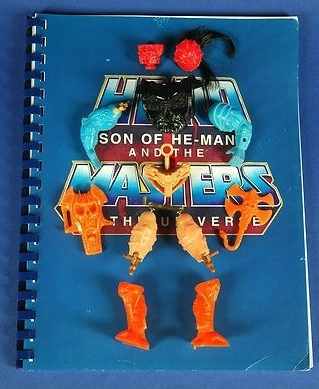
Update: some additional test shots have showed up on eBay recently, included below:

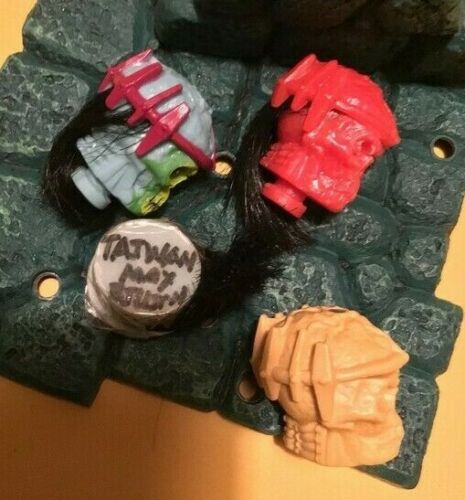


This is the only version of Skeletor to feature rooted hair. It’s a strange look. My particular copy doesn’t have the rooted hair (no doubt someone pulled it out), and I think it looks better without:
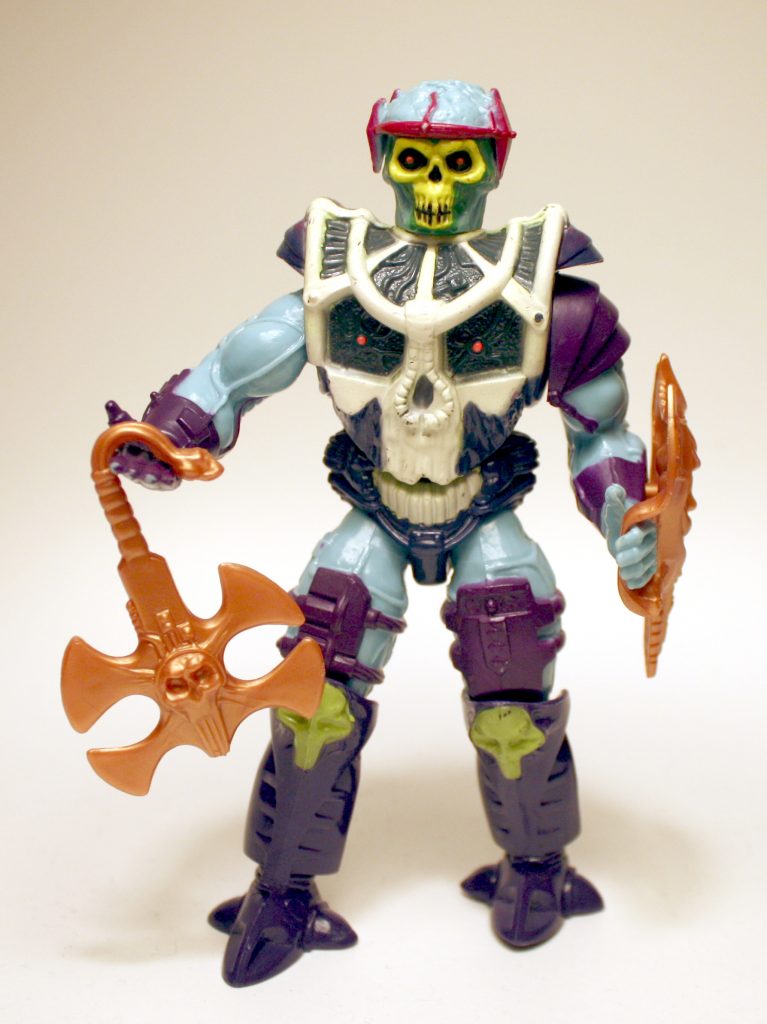

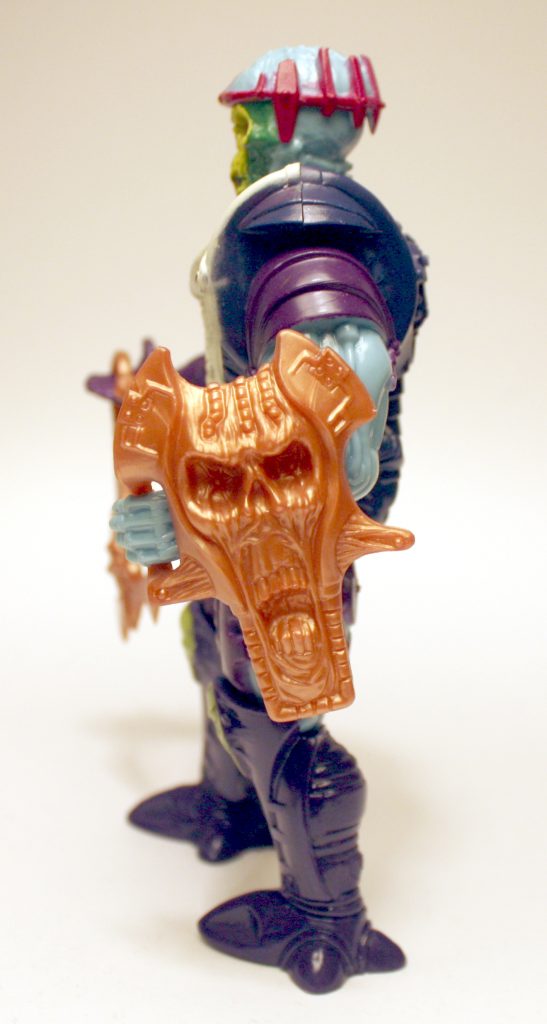
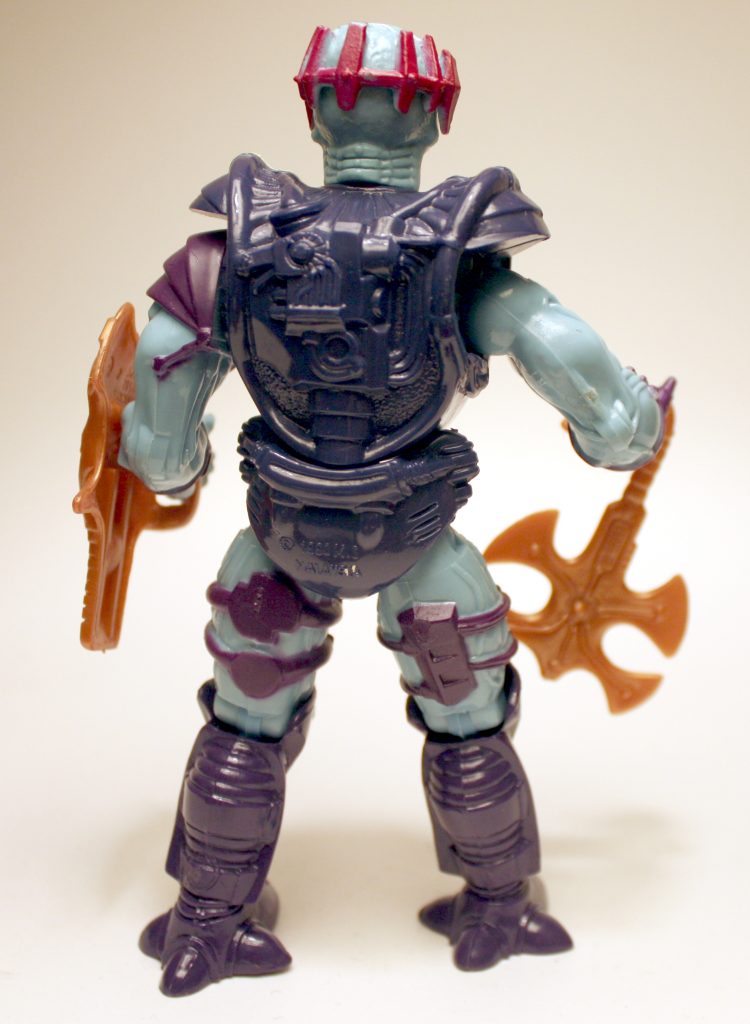


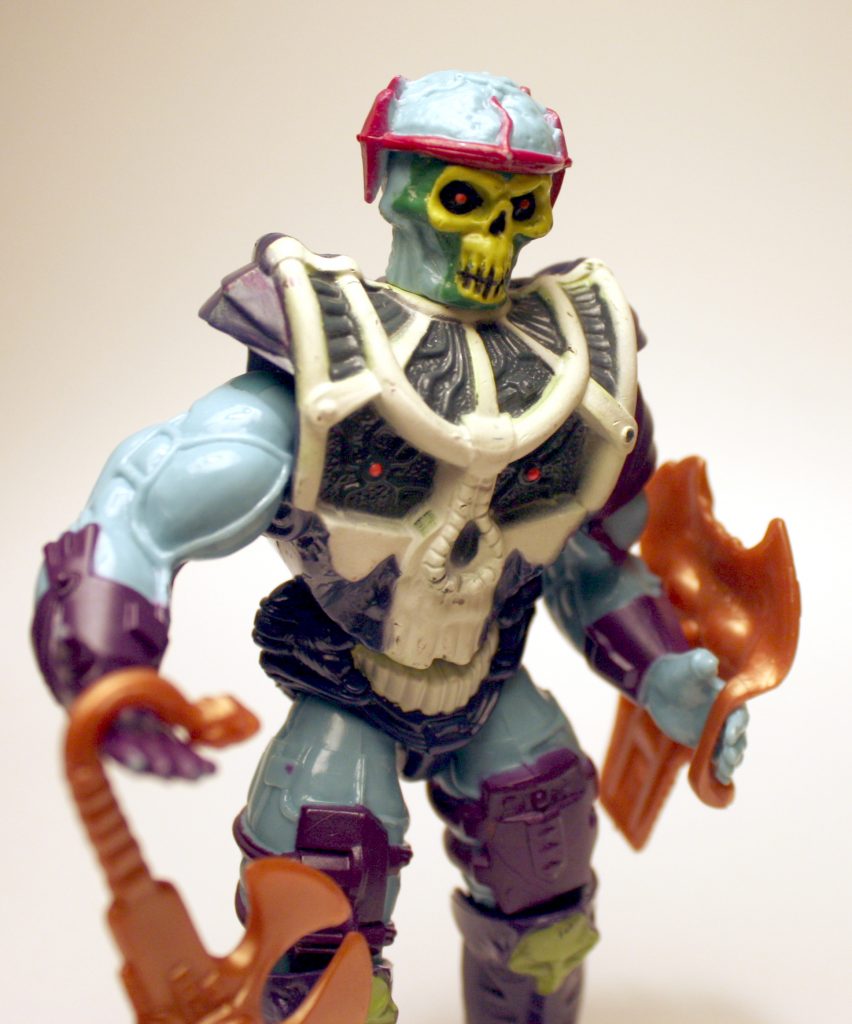
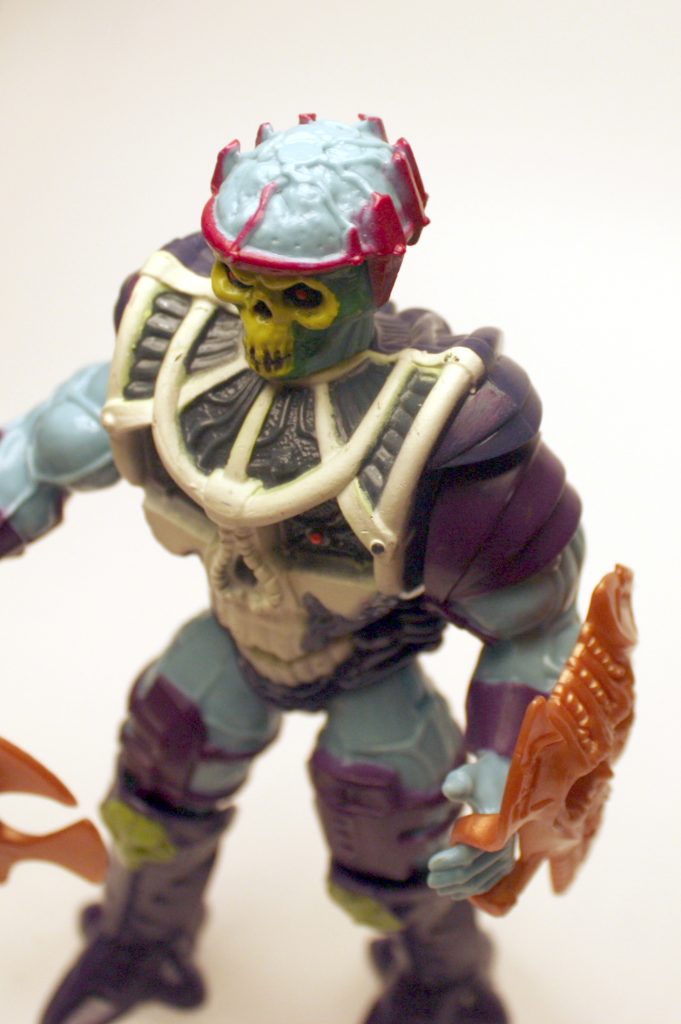
Battle Blade Skeletor has a spring-loaded, ball-jointed right arm that allows him to toss his “quadro-blade” weapon. He also comes with a shield that continues with the creepy skull motif. The white paint on his torso glows in the dark. Unlike the 1989 Skeletor, this version is almost in scale with the original 1982 MOTU line. He stands at about the same height, although of course that’s while standing up straight – something most of the original figures couldn’t do.
William George painted the artwork on the front of the figure’s packaging, but I don’t know who was responsible for the illustrations on the back.
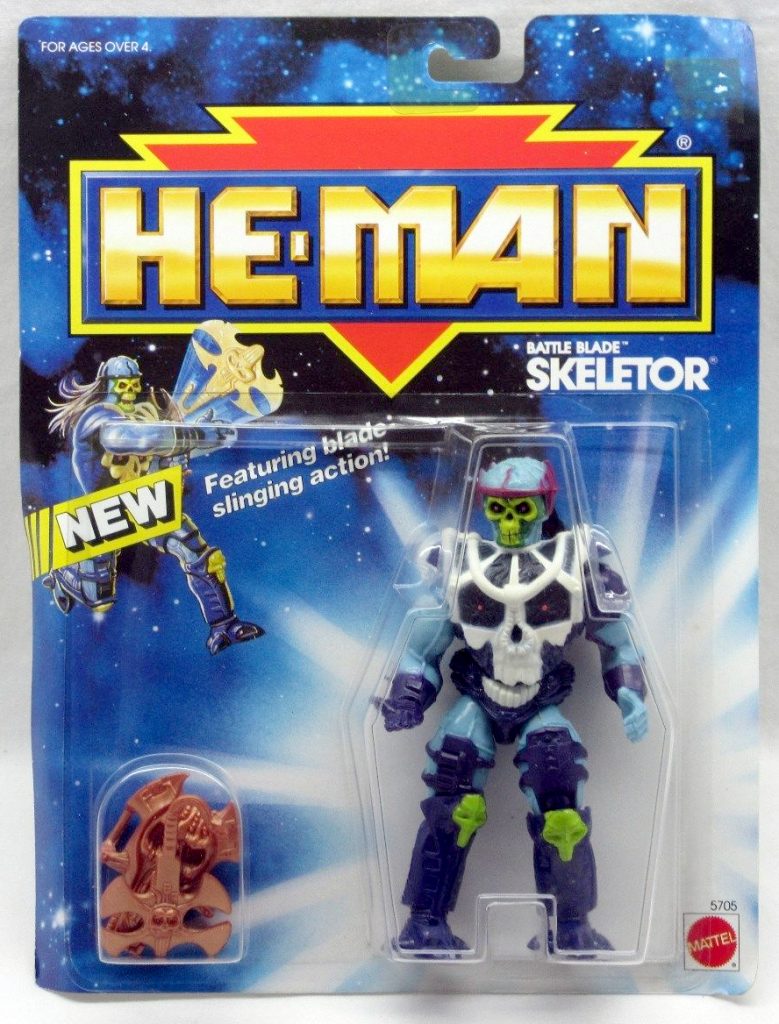
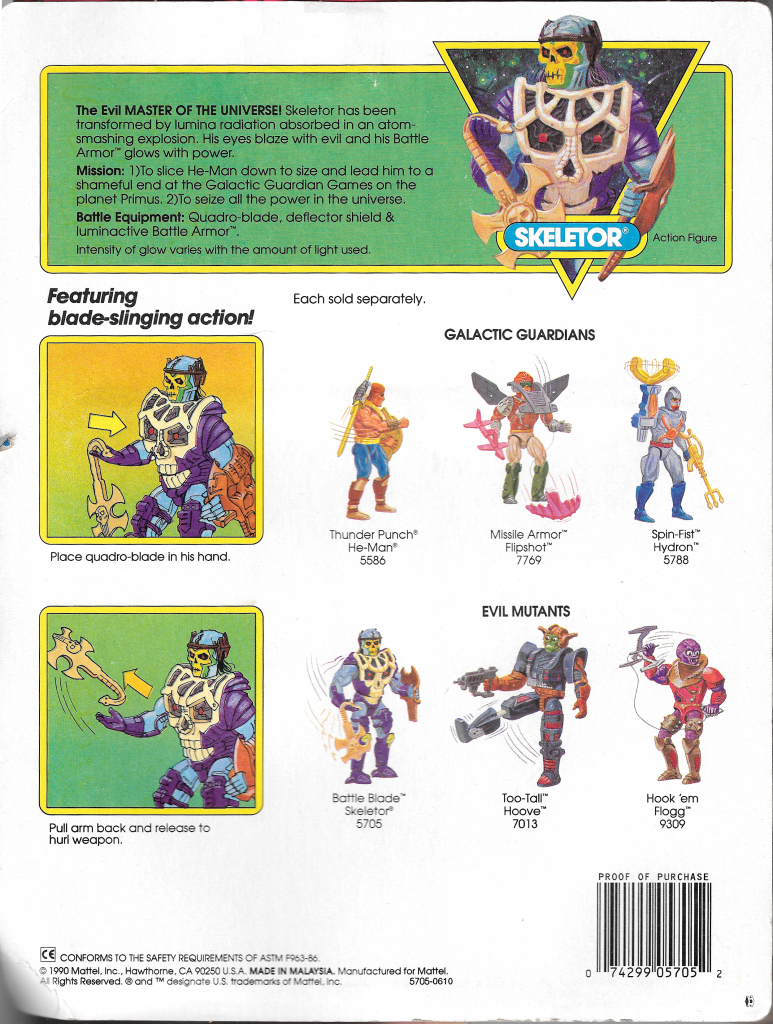

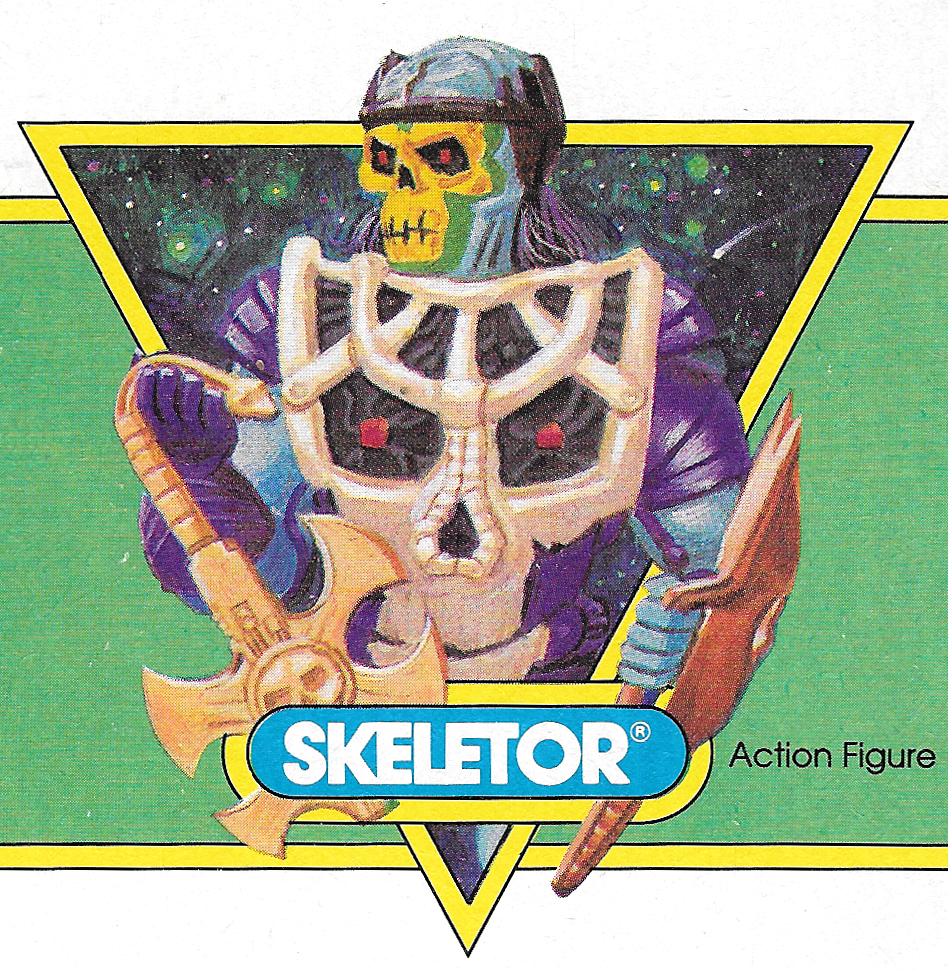
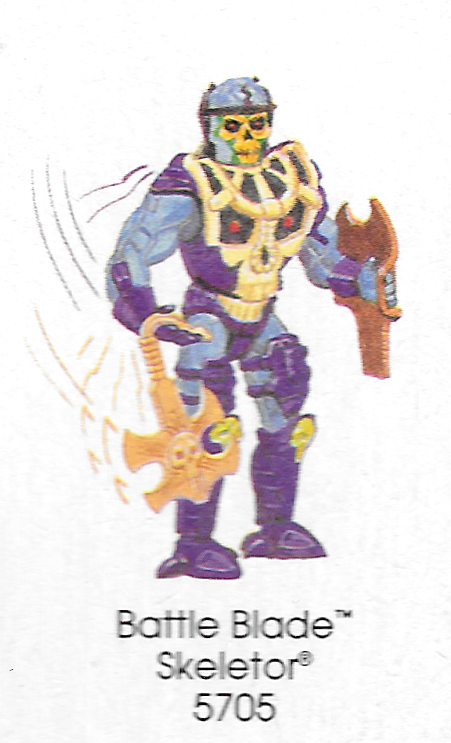
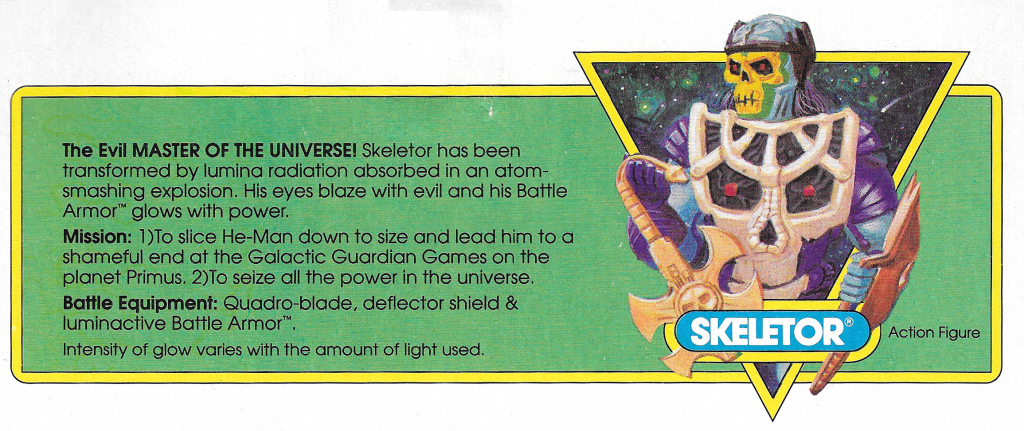
The back of the package (above) gives us a little bit of a bio:
The Evil MASTER OF THE UNIVERSE! Skeletor has been transformed by lumina radiation absorbed in an atom-smashing explosion. His eyes blaze with evil and his Battle Armor glows with power.
Mission: 1) To slice He-Man down to size and lead him to a shameful end at the Galactic Guardian Games on the planet Primus. 2) To seize all of the power in the universe.
Battle Equipment: Quadro-blade, deflector shield & luminactive Battle Armor.
I guess it’s good to have life goals! The Galactic Guardian Games refers to a storyline in the animated series, produced by Jetlag. Skeletor appears (more or less) in his Battle Blade outfit toward the end of the series (thanks to DarkAlex1978 for pointing that out). Essentially this is his look after he lost his “Disks of Doom” helmet during a battle with He-Man in “The Tornadoes of Zil” (thanks to Dave for the tip):


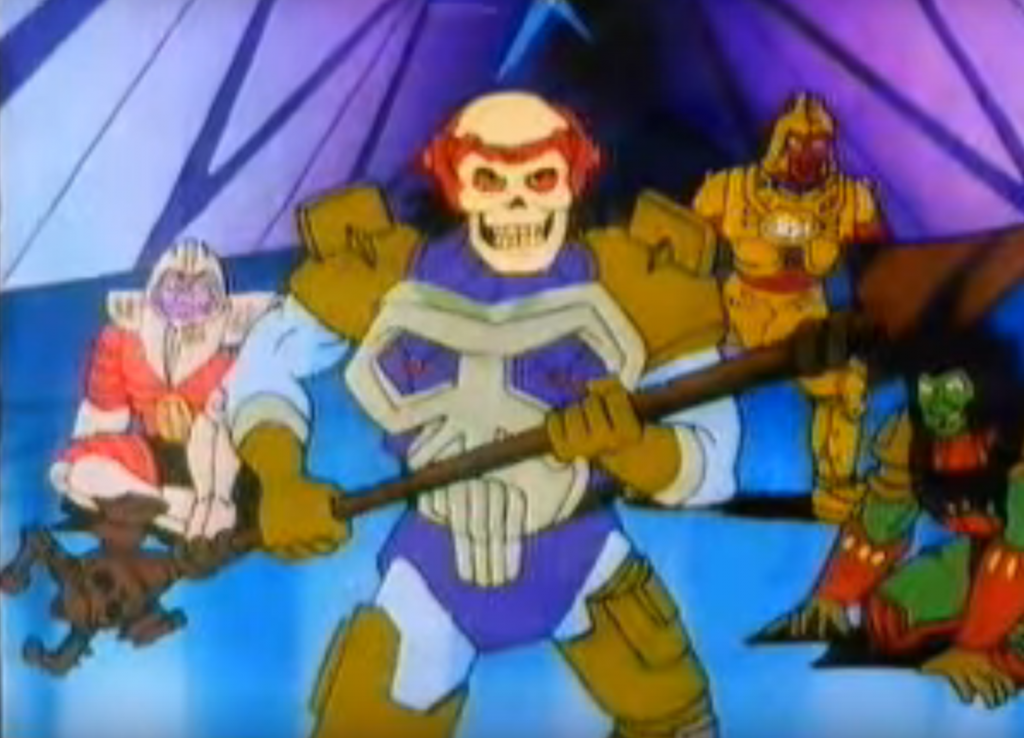
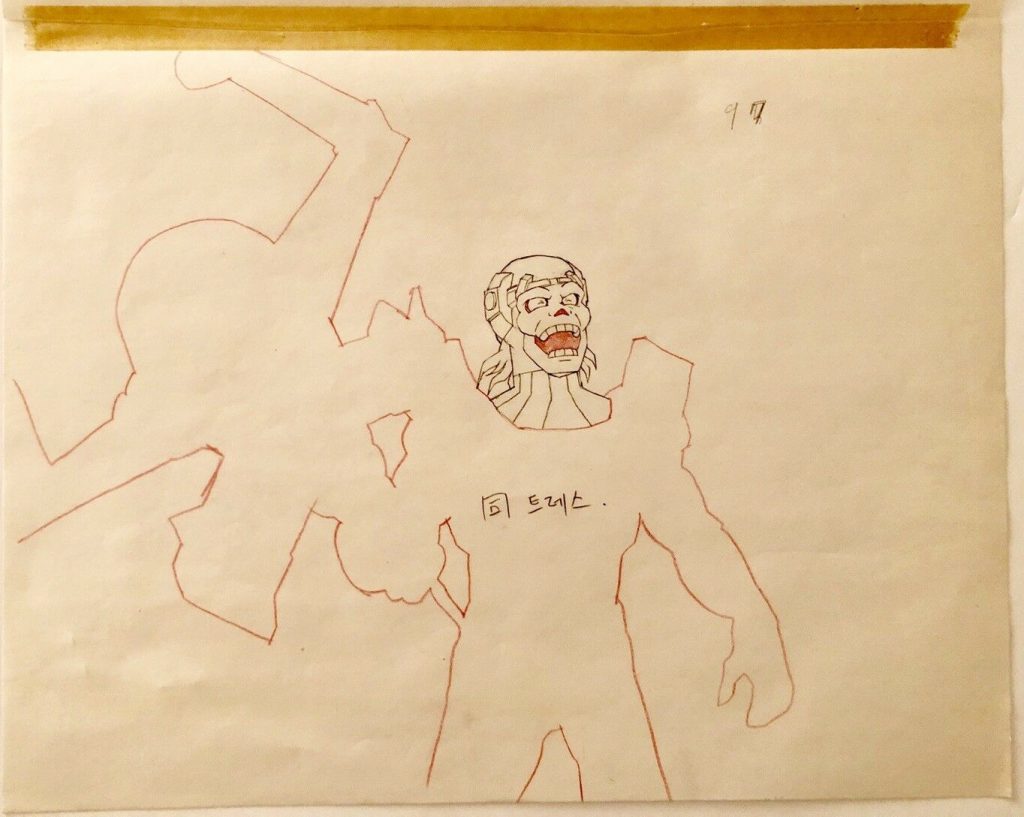
It’s strange to me that Mattel was still making Skeletor figures in the era of grunge music. Come to think of it, this is certainly a grungy-looking figure, so he somewhat captures the spirit of the era.
Want to support the blog? Consider becoming a Patreon supporter. You’ll also gain access to exclusive content and early access to posts on the blog. Alternatively, you can do your toy shopping through my Entertainment Earth affiliate link, below. Thank you!
